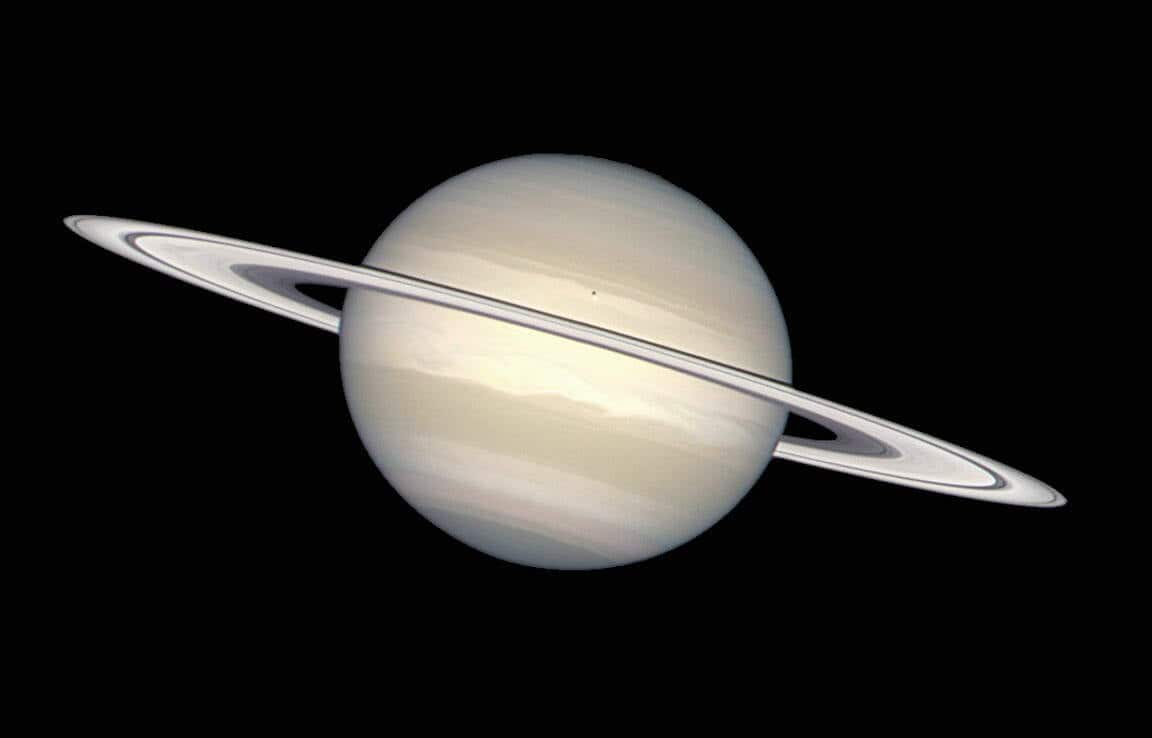On September 15, 2017, the Cassini mission came to an end, marking a significant milestone in space exploration. The spacecraft deliberately entered Saturn’s atmosphere and disintegrated, ensuring that it would not pose a threat to any of Saturn’s satellites in the future. This precautionary measure was taken to prevent the potential contamination of Saturn’s moons with Earth’s microorganisms.
The Cassini mission has been truly remarkable, yielding countless discoveries and an immense amount of data about Saturn, the sixth planet from the sun. Additionally, it has provided us with a vast collection of breathtaking photographs showcasing the beauty of Saturn and its satellites. To commemorate the fifth anniversary of Cassini’s completion, The Universe Space Tech editors have curated a selection of twenty-five of the most stunning images captured by the spacecraft.
Jupiter
During its mission, Cassini made a stop at Jupiter, capturing images of the biggest planet in our solar system and a number of its moons.
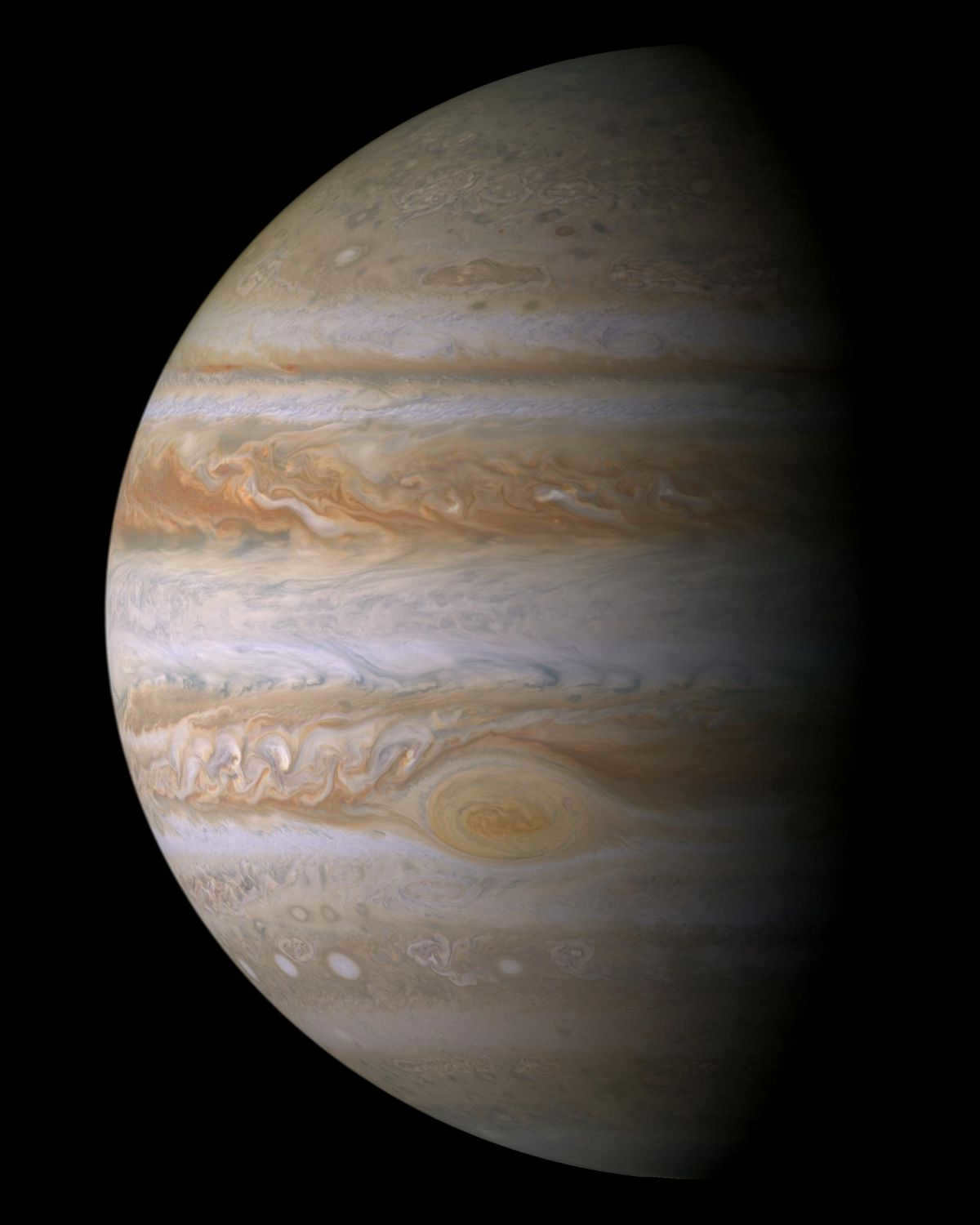
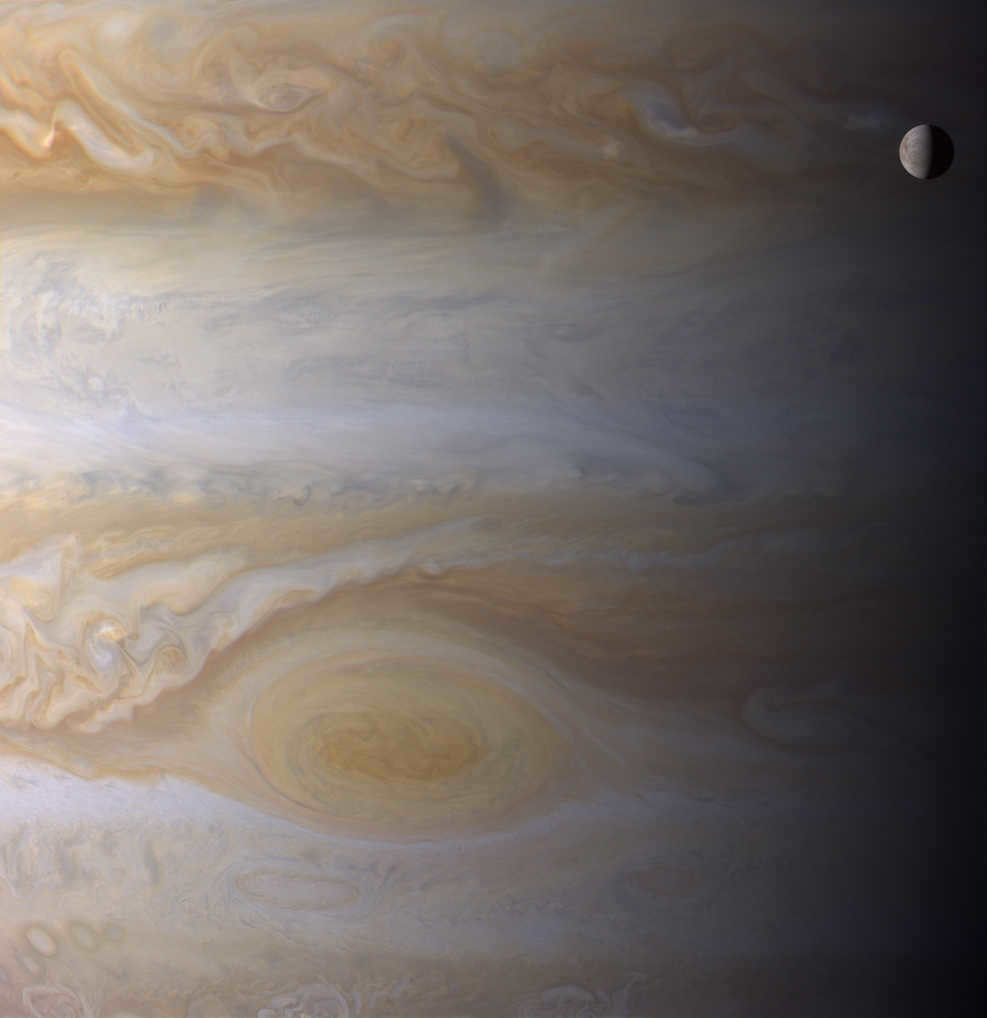


The Fascinating Planet – Saturn
Throughout its existence, Cassini spacecraft has captured numerous breathtaking images of Saturn.
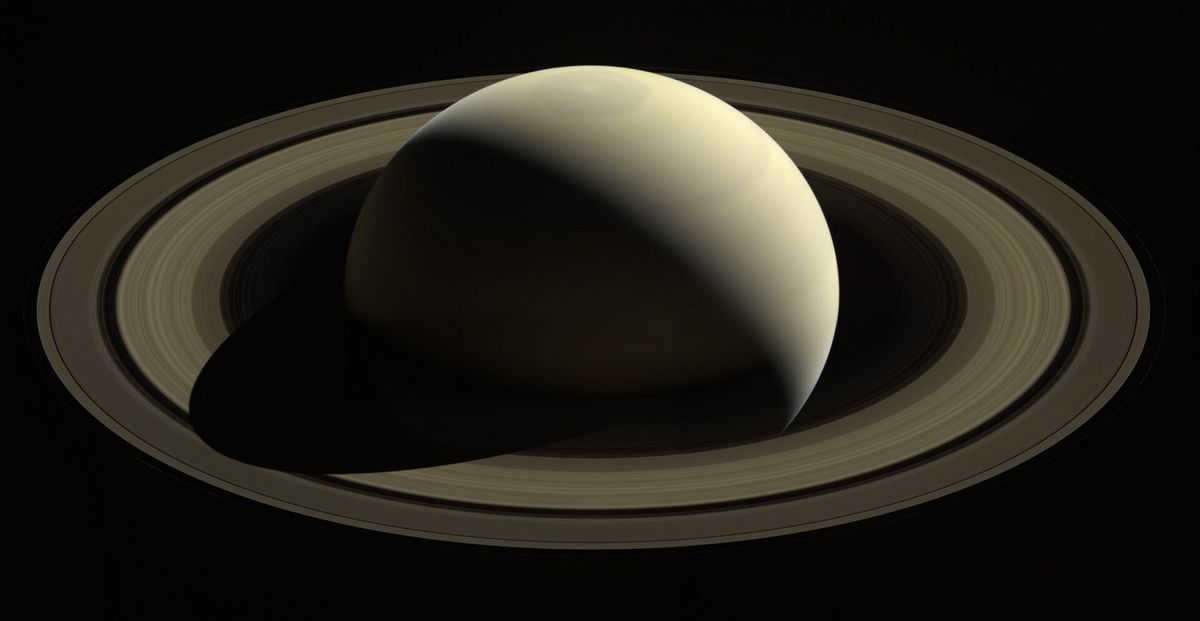
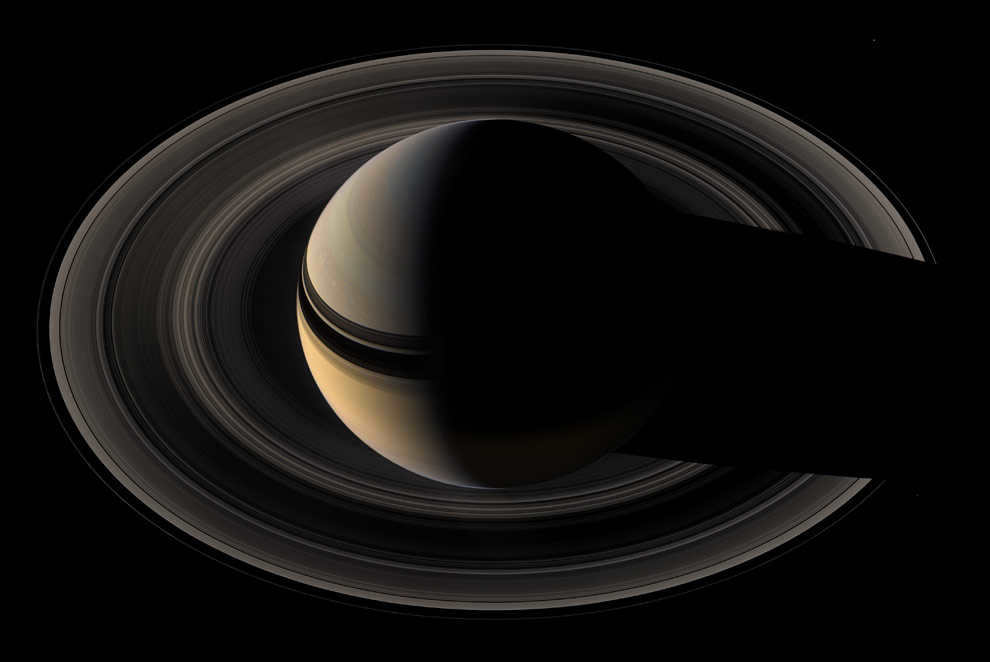
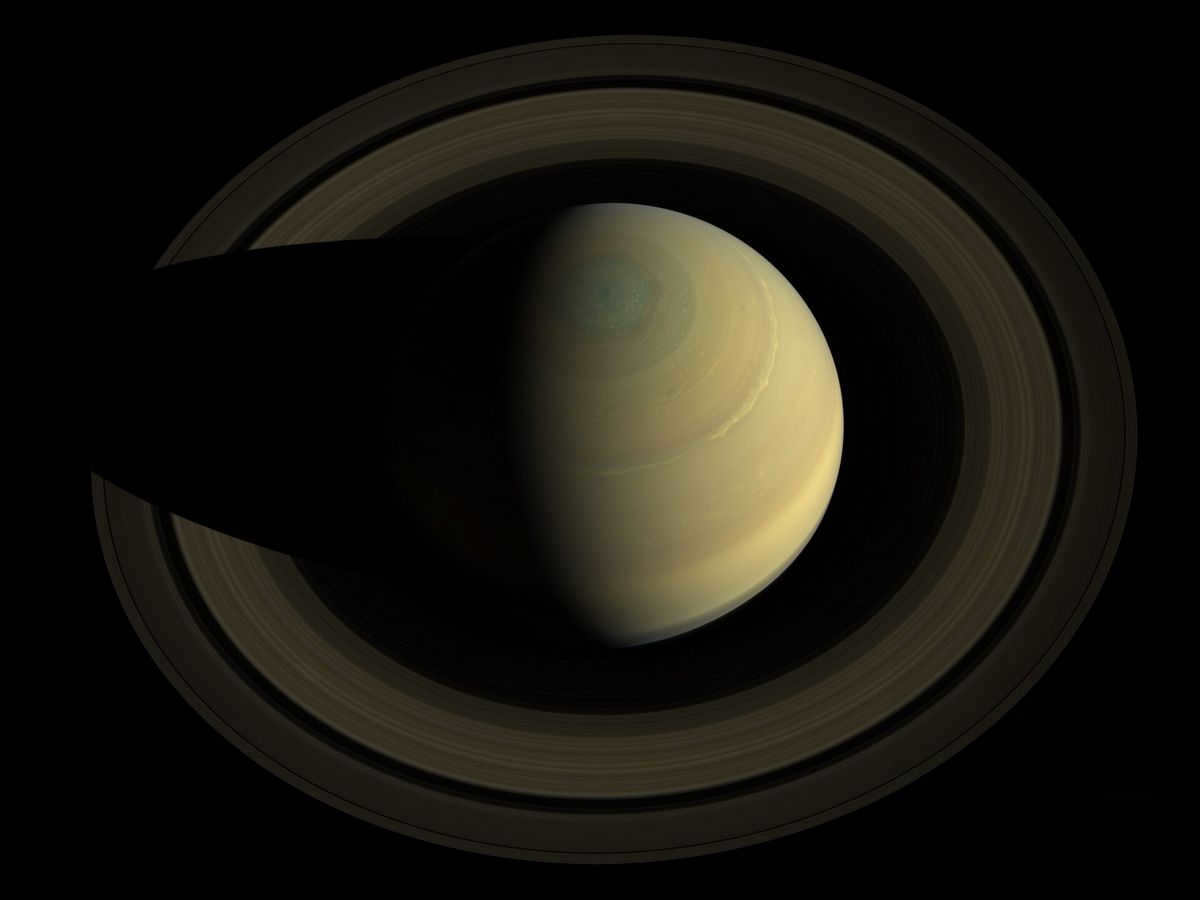
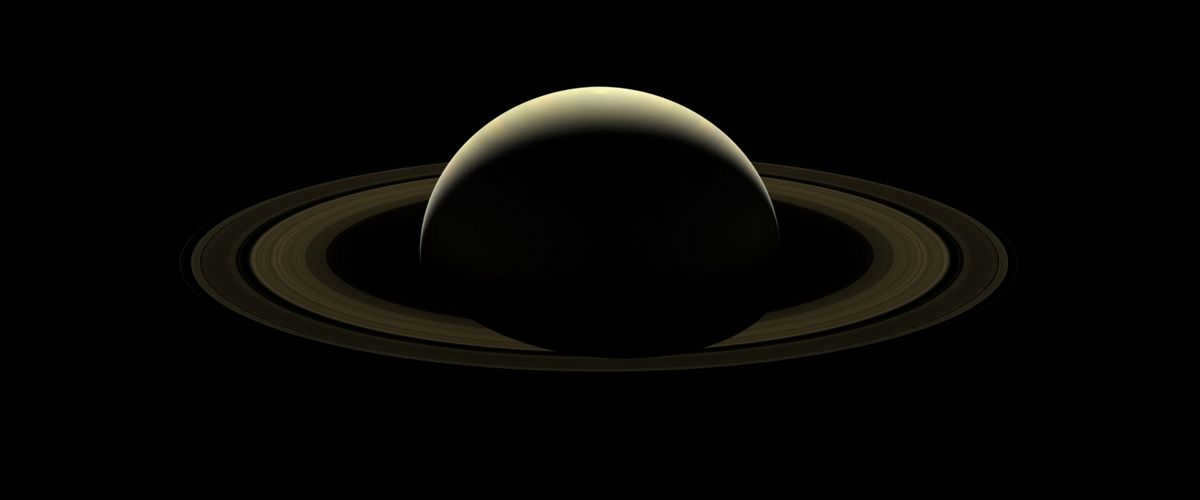
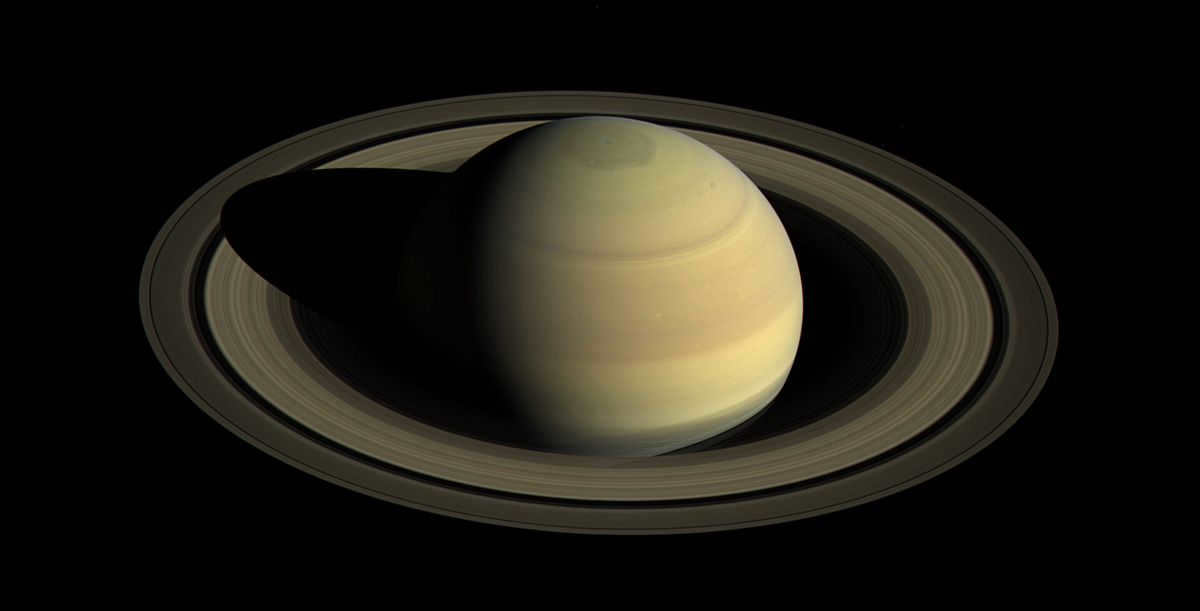
One of the most mysterious formations on Saturn is known as a hexagon. This enormous vortex takes the shape of a perfect hexagon and spans 25,000 kilometers in diameter, making it twice the size of Earth. Positioned above Saturn’s north pole, this captivating feature has been captured in multiple photographs by the Cassini spacecraft.
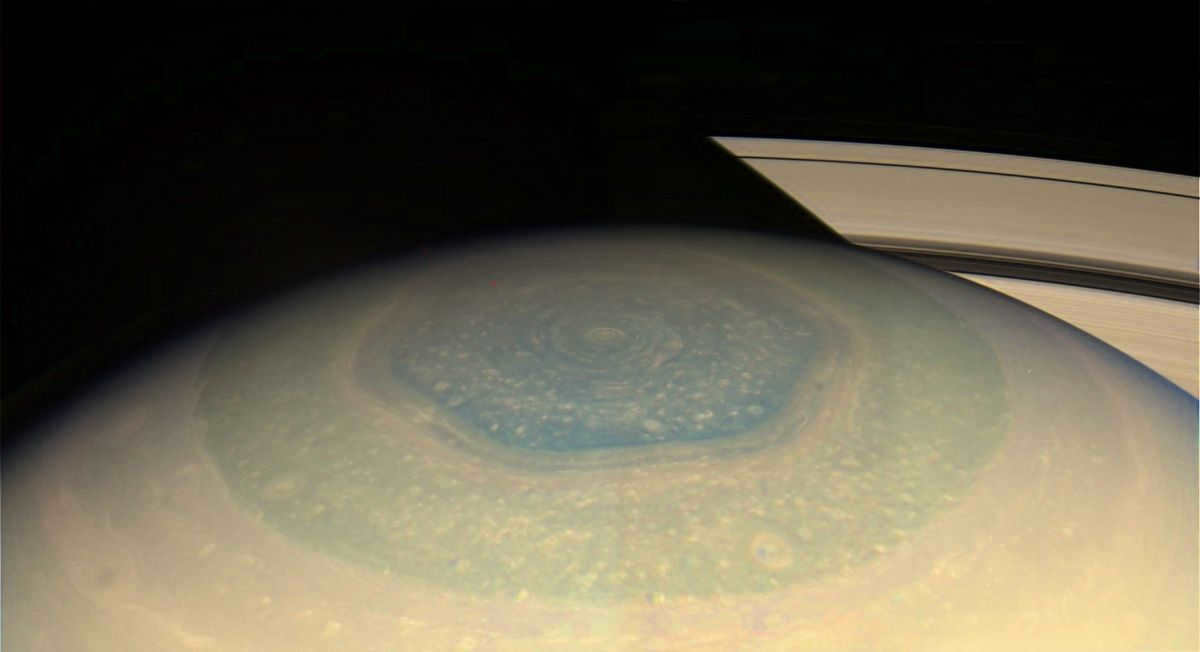
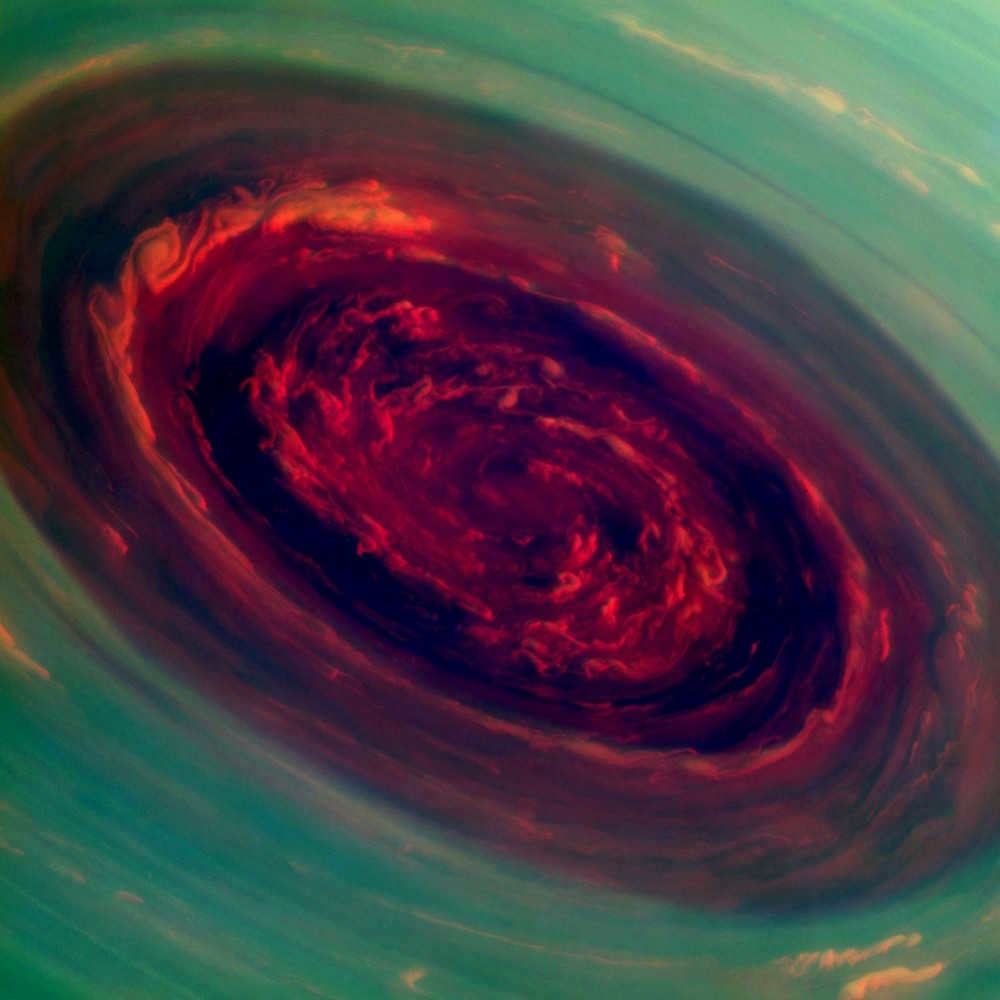
The Color of Saturn’s Rings
The images captured by Cassini provided clear evidence of the intricate composition of Saturn’s rings and the intricate formations that occur within them. Additionally, the spacecraft was able to capture photographs of several tiny moons that orbit within the rings and exert gravitational influences on them.
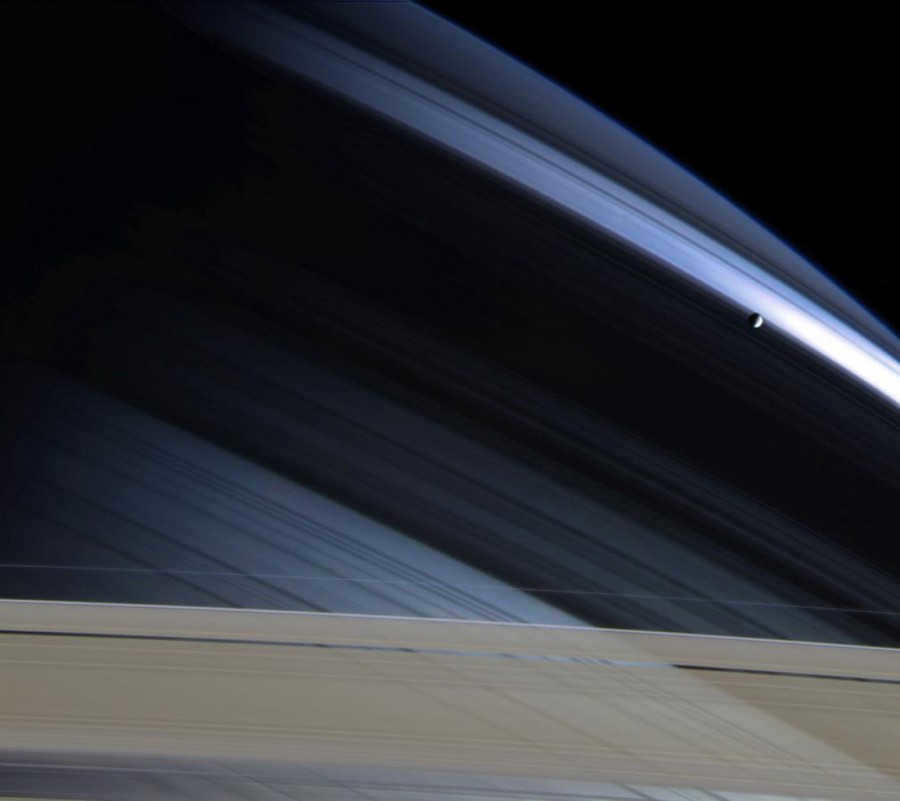
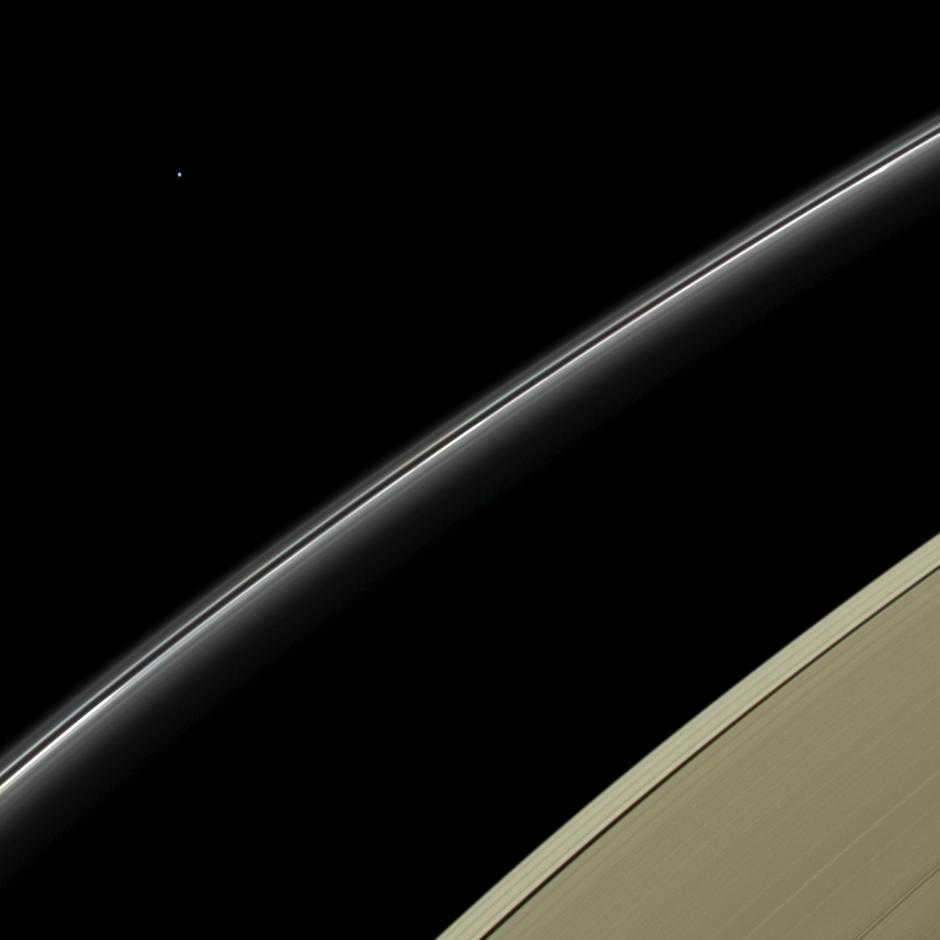
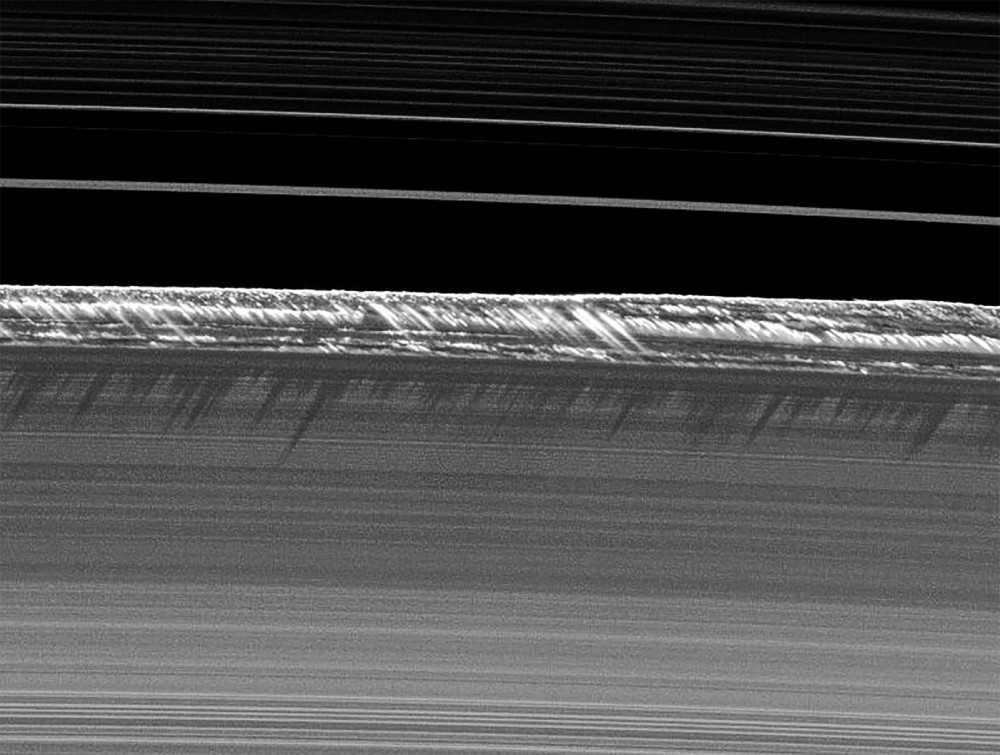
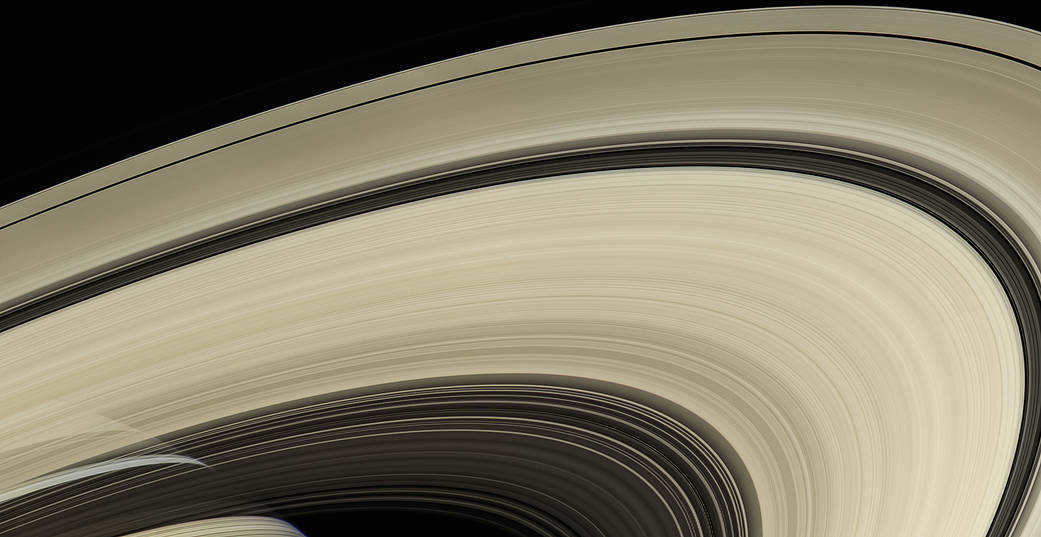
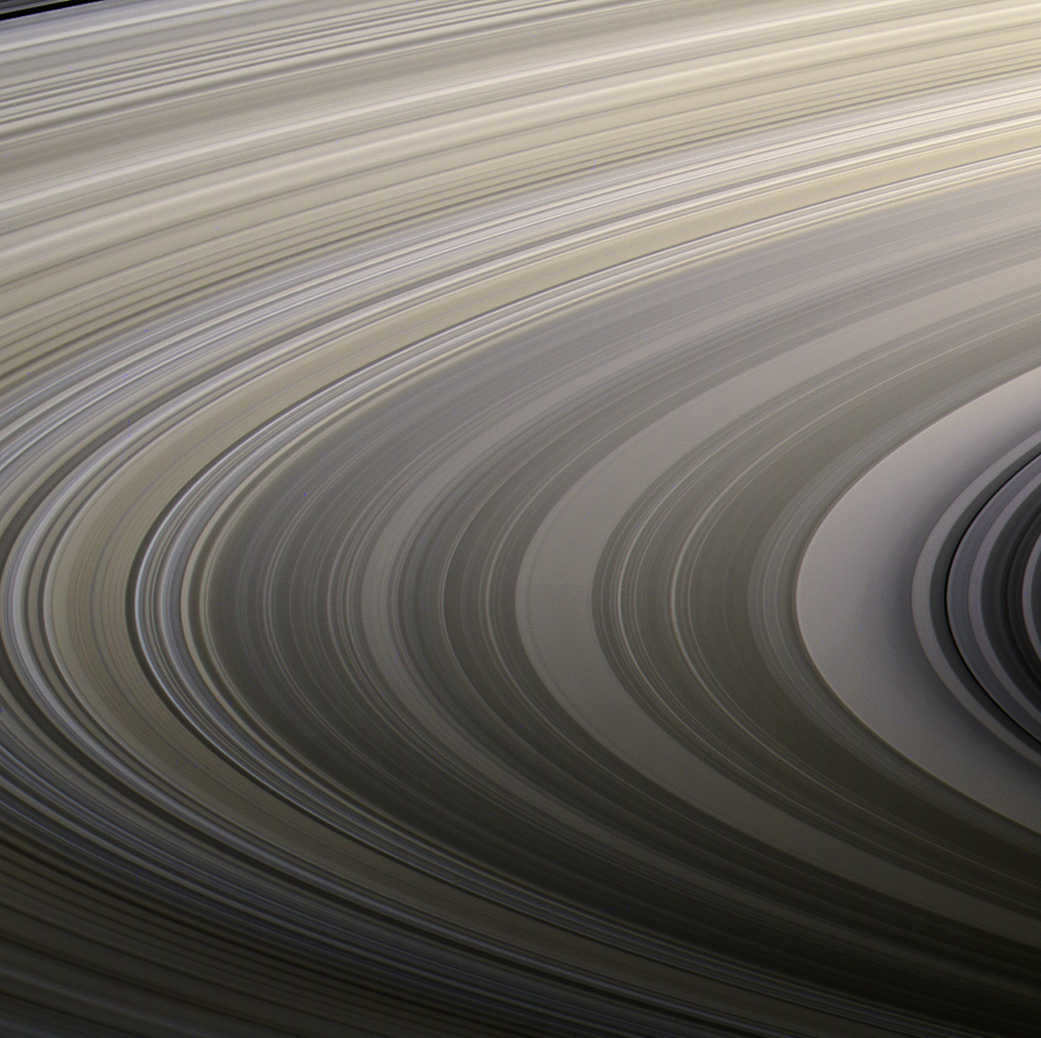
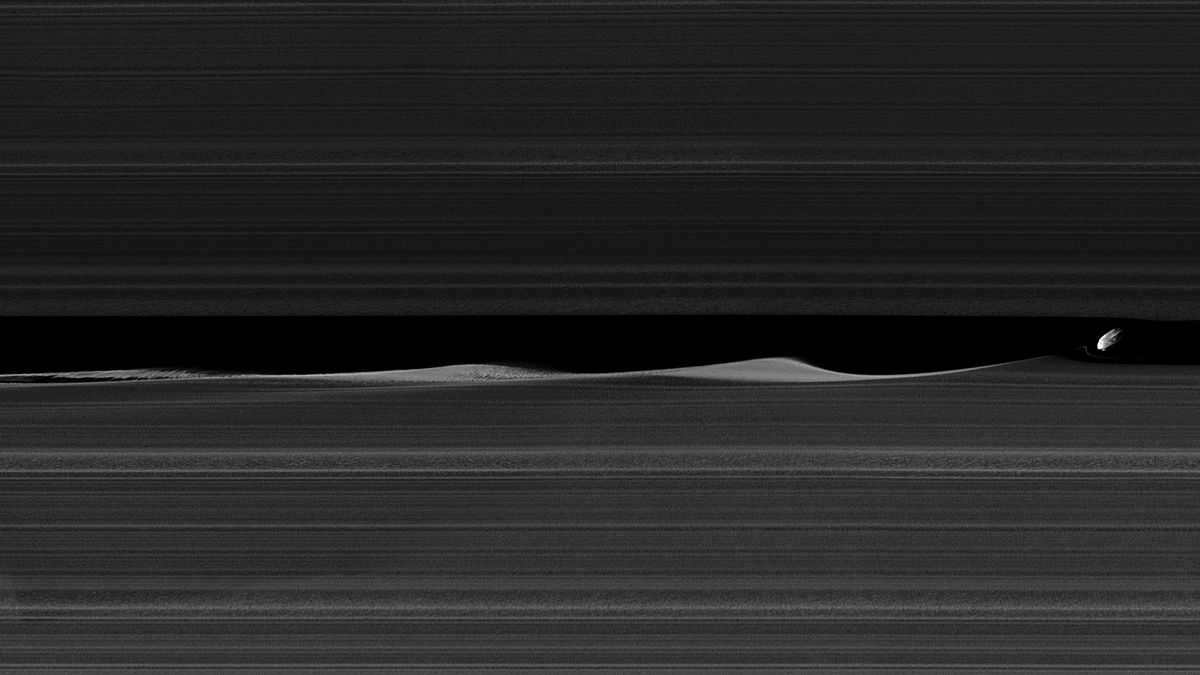
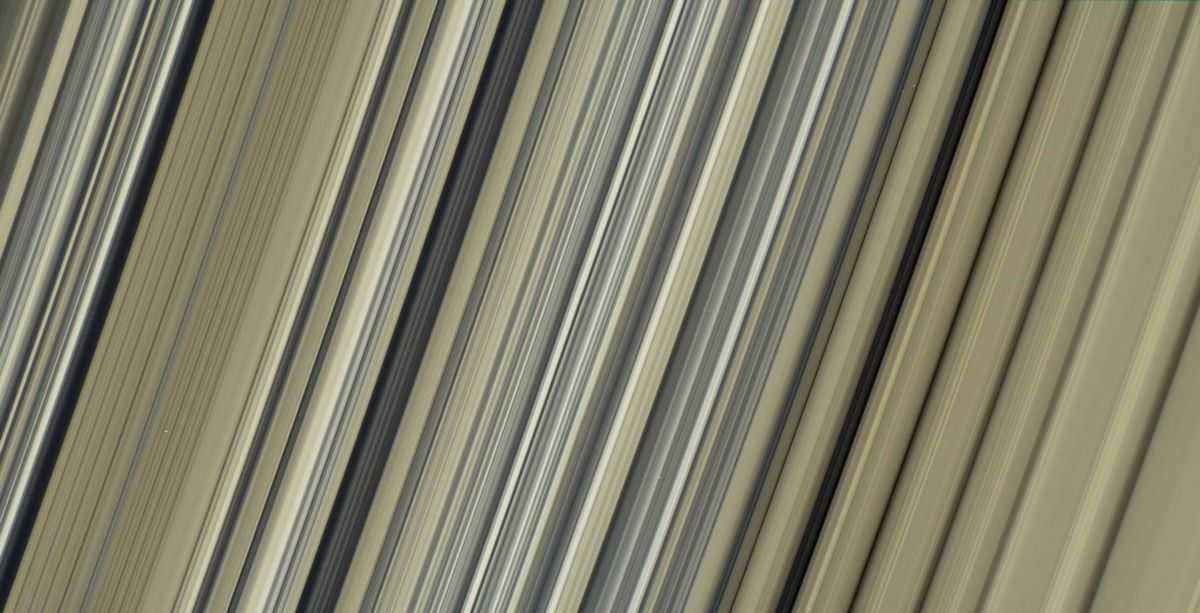
Satellites of Saturn
Cassini also captured intricate images of each of the primary moons orbiting Saturn.
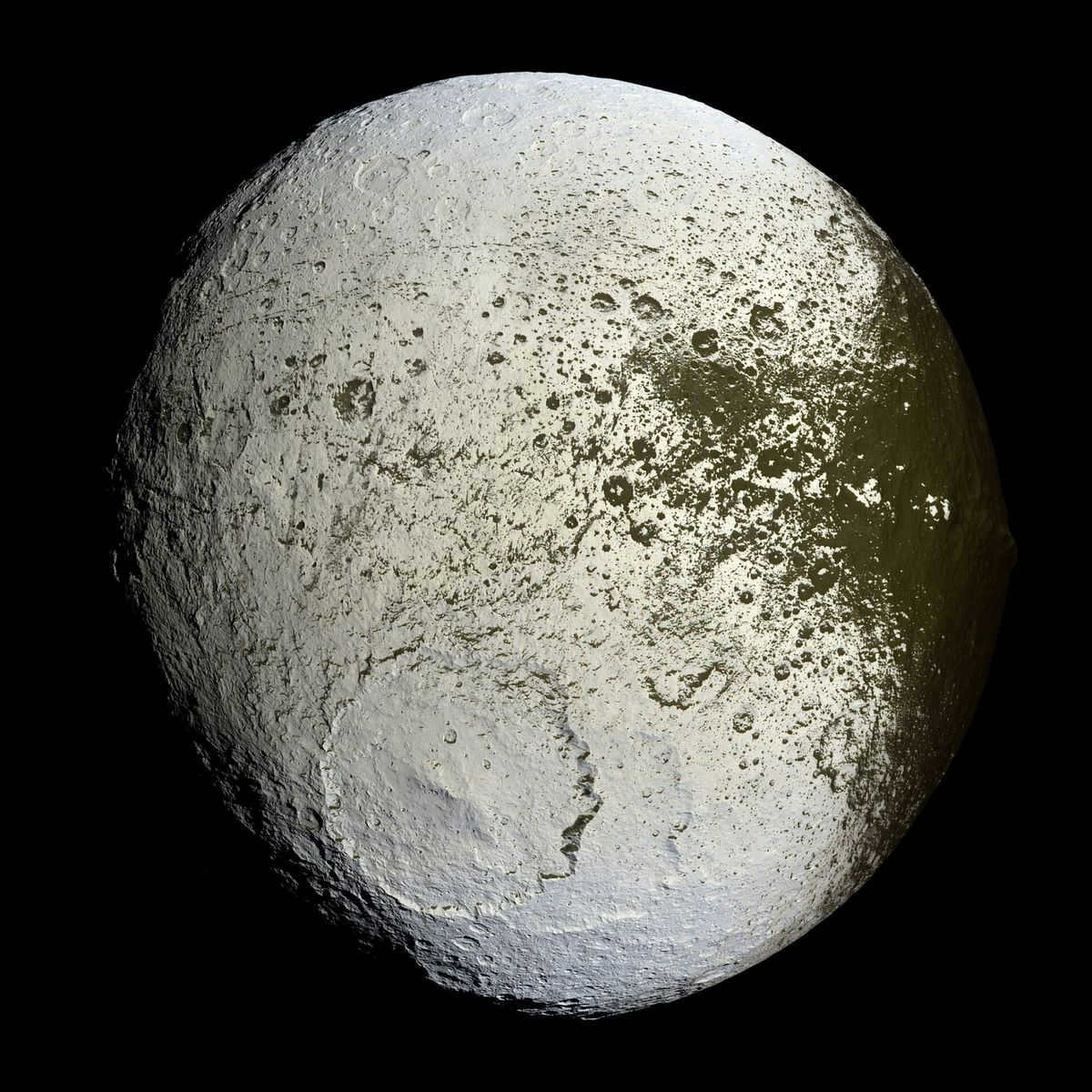
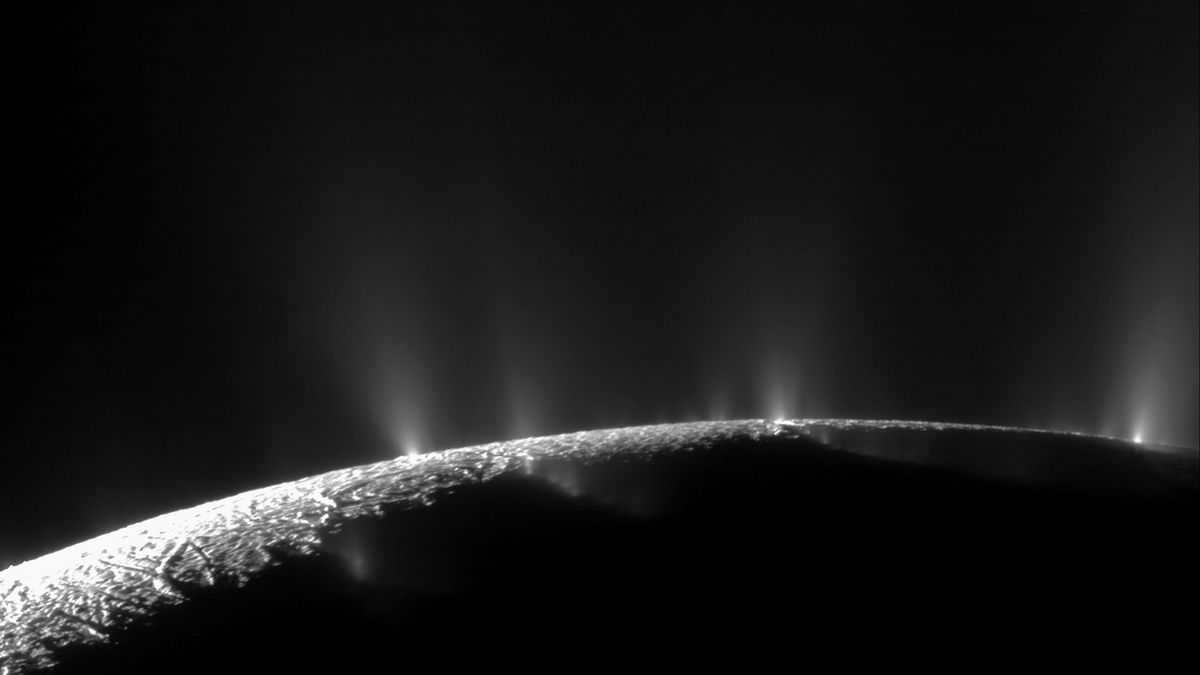
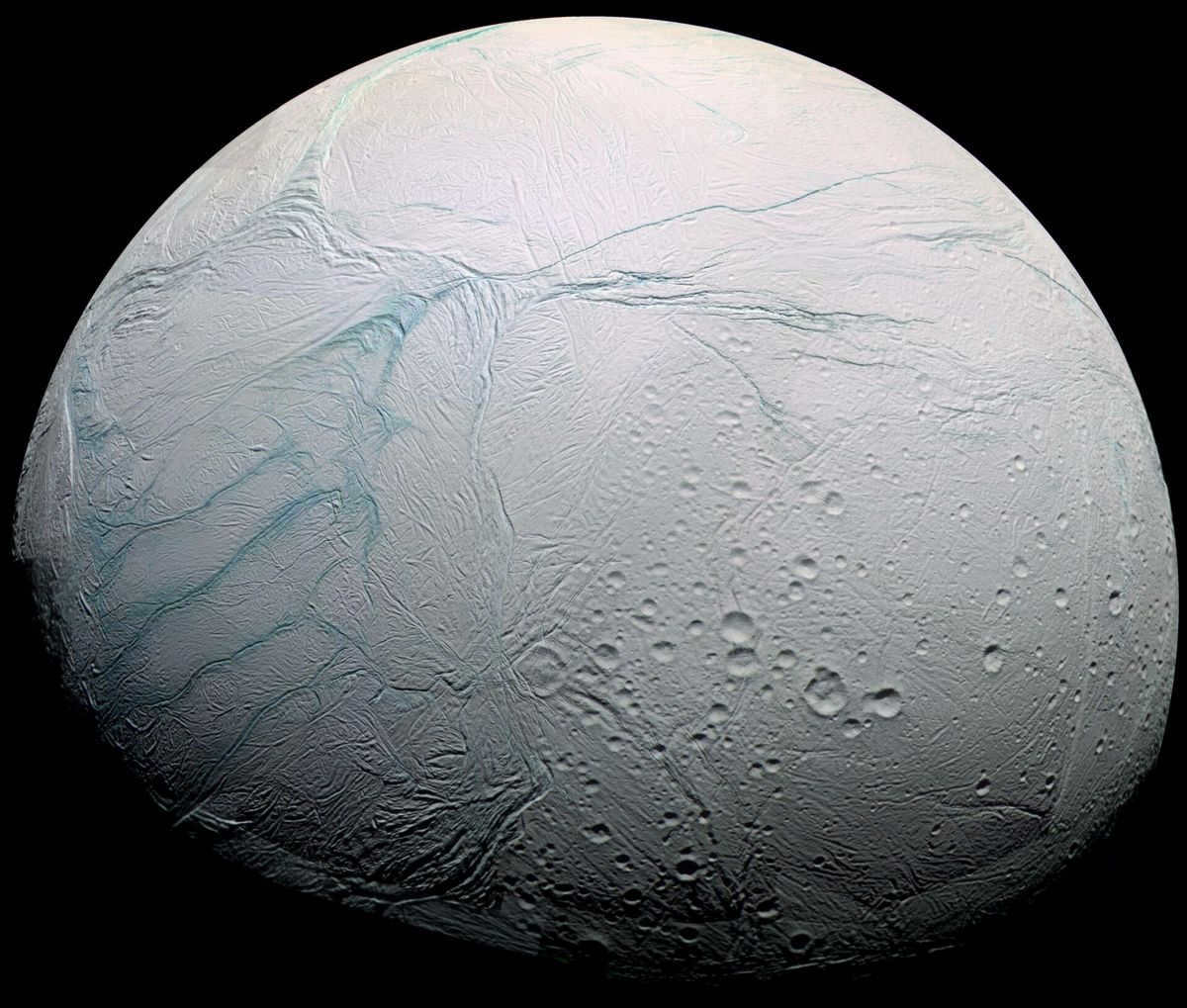
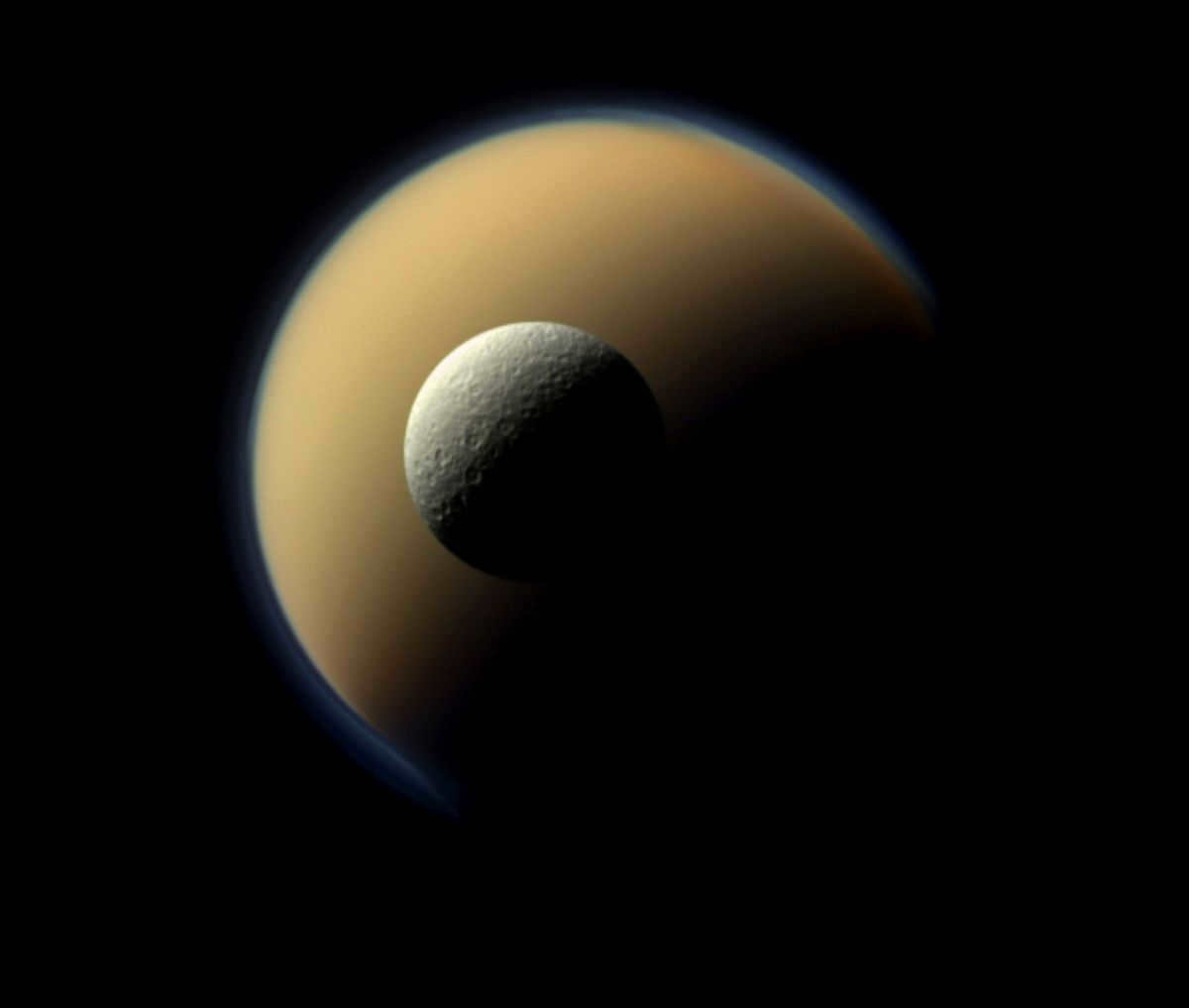
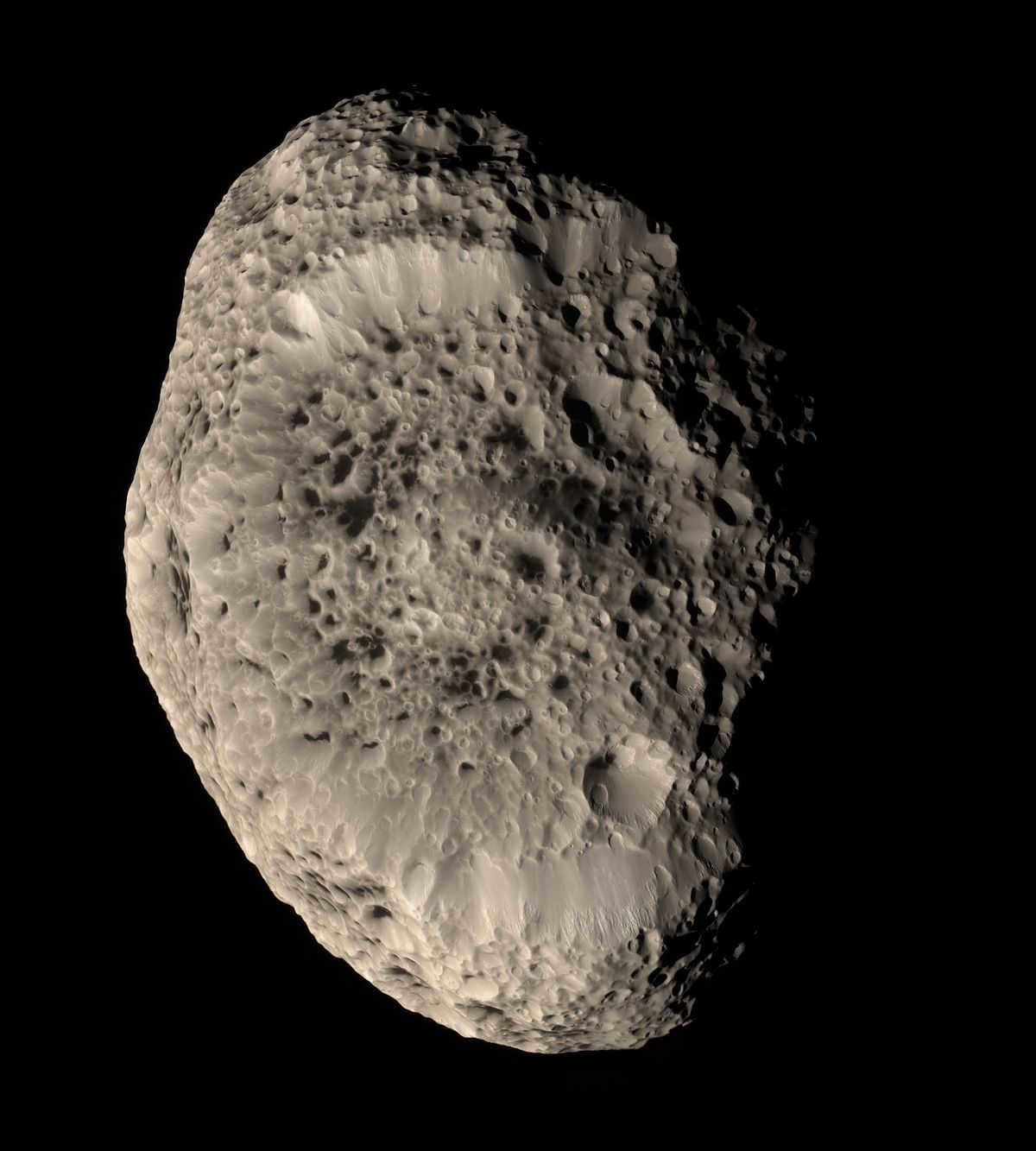
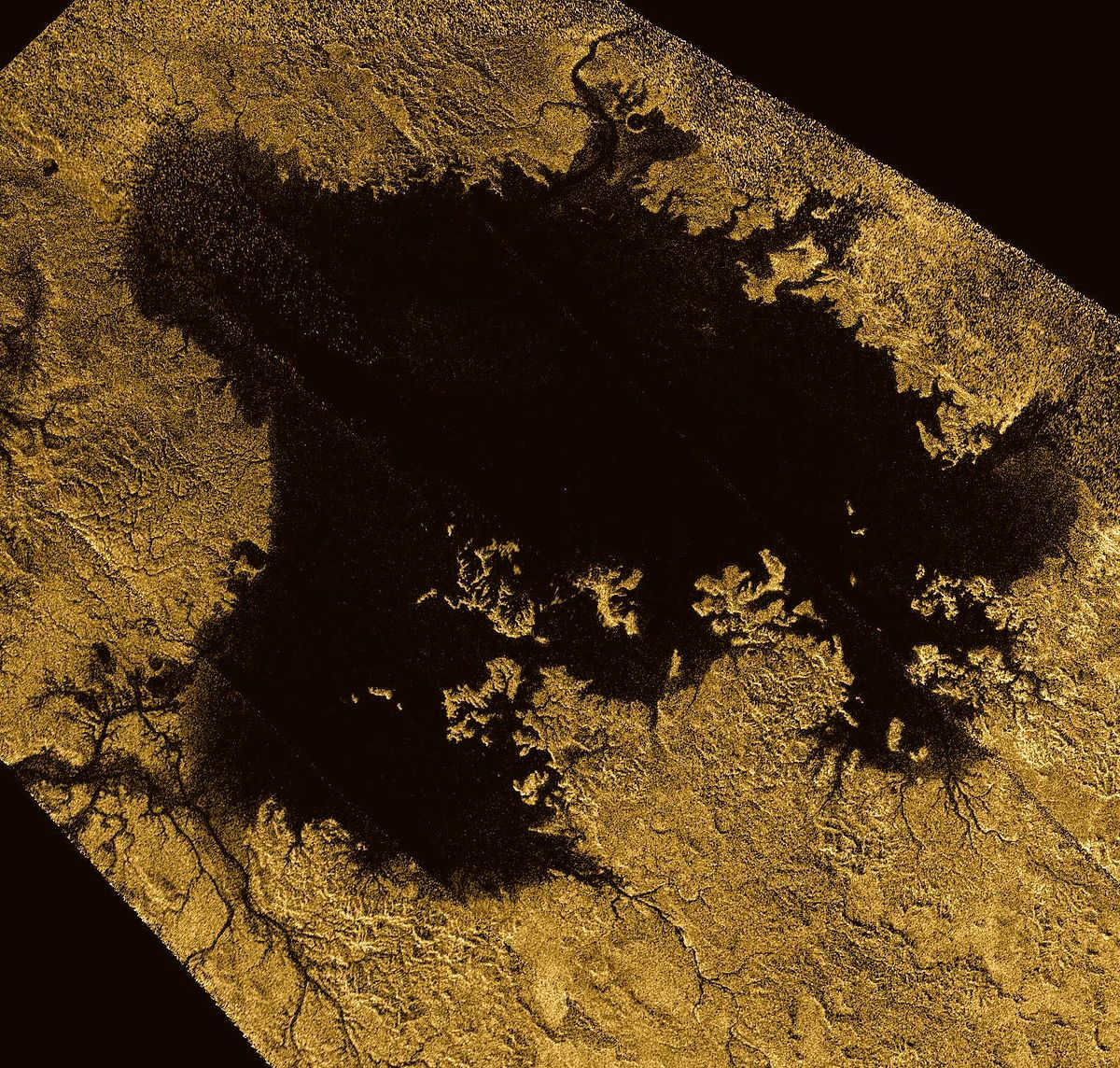
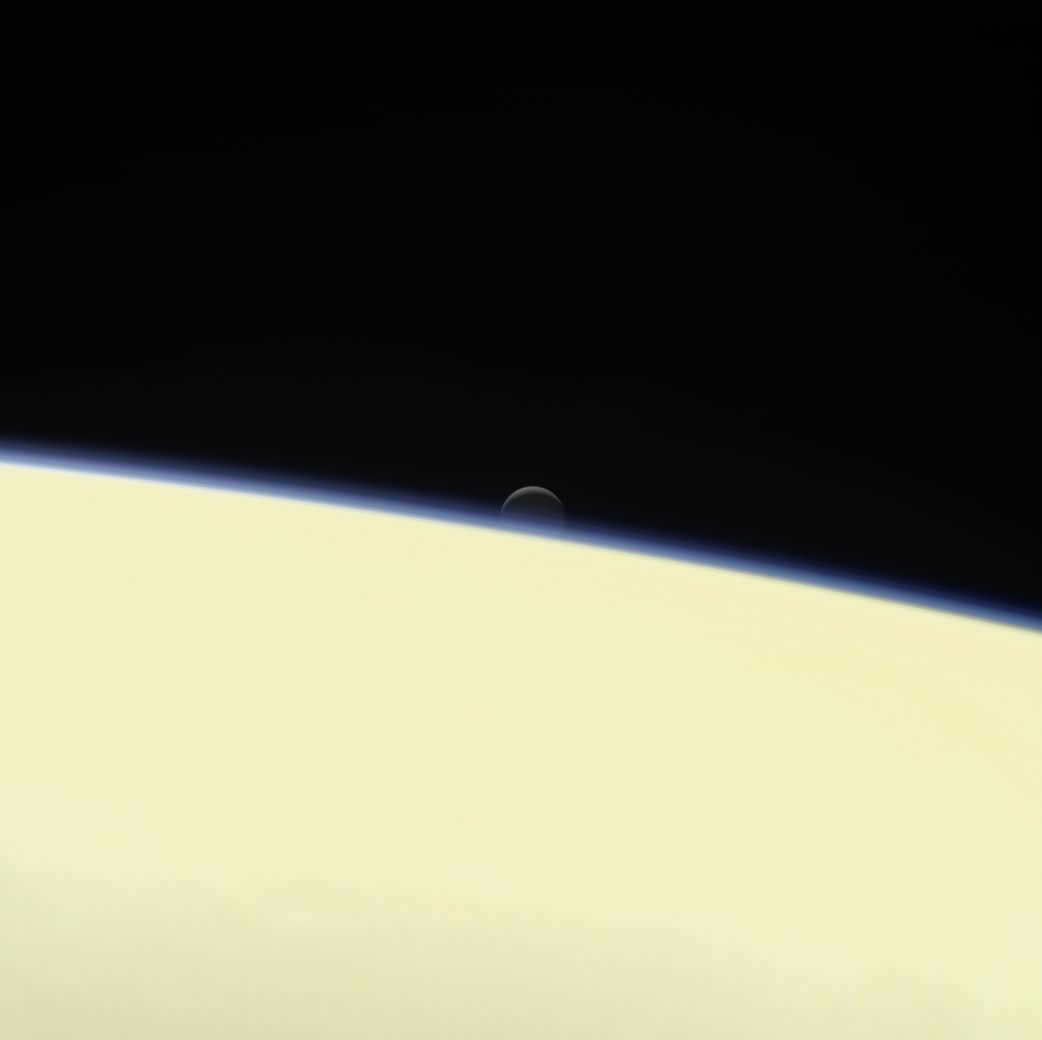
In the year 2013, a photograph was taken by Cassini that captured Saturn and its moons, as well as our own planet.
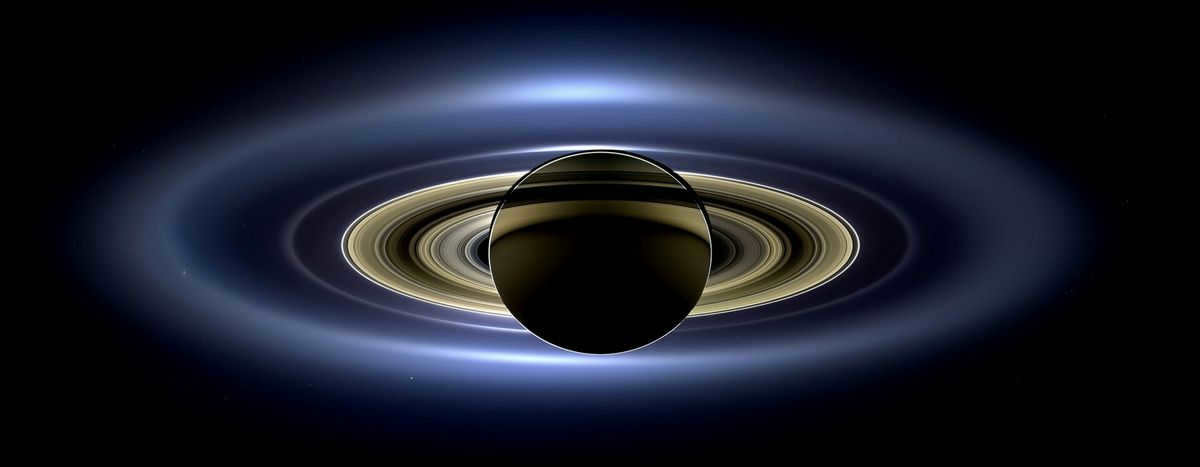
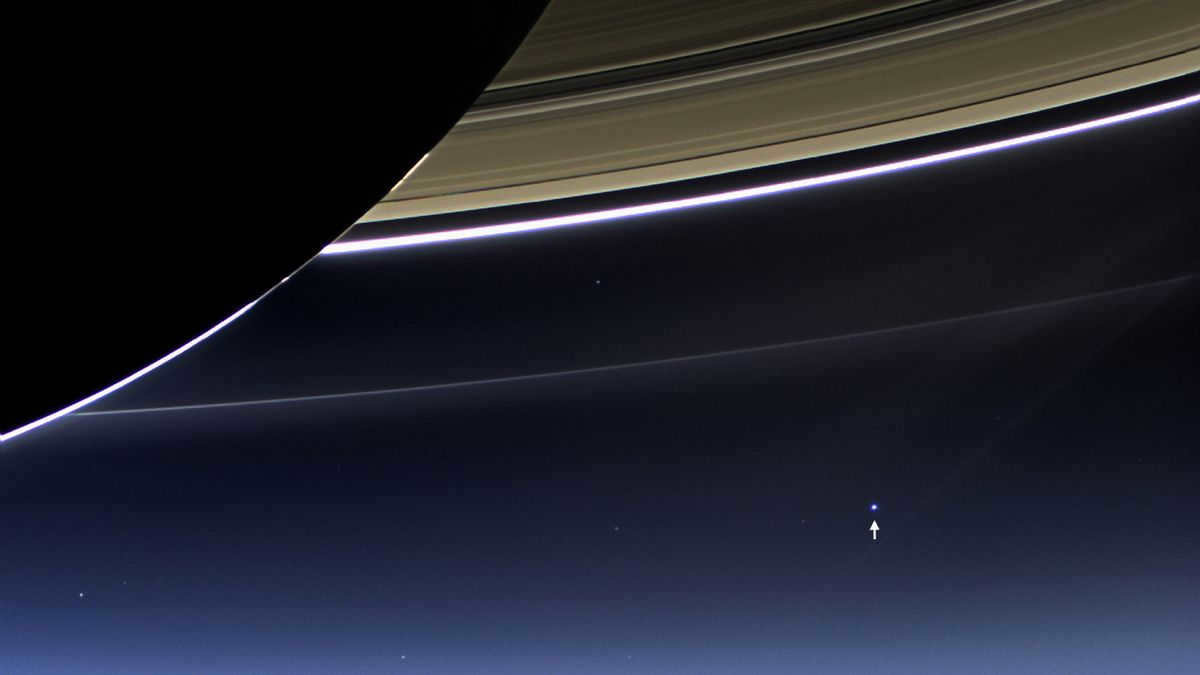
Join our Telegram channel to stay updated with the most fascinating news and facts!

As a news editor and article author, my passion for space and astronomy has been with me since childhood. This passion has evolved into a professional pursuit, where I now write news, fact check, and prepare analytical materials for The Universe. Space. Tech.
Saturn, the sixth planet from the Sun and the second largest, has always fascinated me. With a mass 95 times that of Earth, Saturn is a gas giant with a density even lower than water. Its beauty and mystery are unparalleled, with its striking appearance and captivating rings that make it truly unique among the planets.
What is the significance of the name Saturn? It is derived from the name of the deity Cronus, who ruled over the powerful titans in ancient Greek mythology. The planet earned this name due to its immense size and distinctive physical features.
Characteristics of the celestial body
Atmosphere on Saturn
The atmosphere on Saturn is characterized by the presence of strong winds, which can reach speeds of up to 500 km/h, and sometimes even up to 1500 km/h. Although this phenomenon may seem unpleasant, it actually creates a beautiful spectacle when observed from Earth through a telescope. The planet is known for its raging cyclones, with the largest one being called the Great White Oval. This massive anticyclone appears on the planet’s surface approximately once every thirty years and is named after its appearance. With a size of approximately 17 thousand kilometers, it is truly a sight to behold.
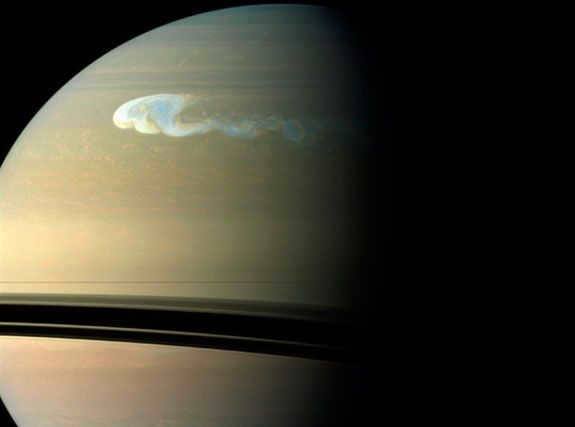
The composition of the planet’s atmosphere is predominantly hydrogen and helium, with a small amount of nitrogen. In the upper layers, one can observe the presence of ammonia clouds.
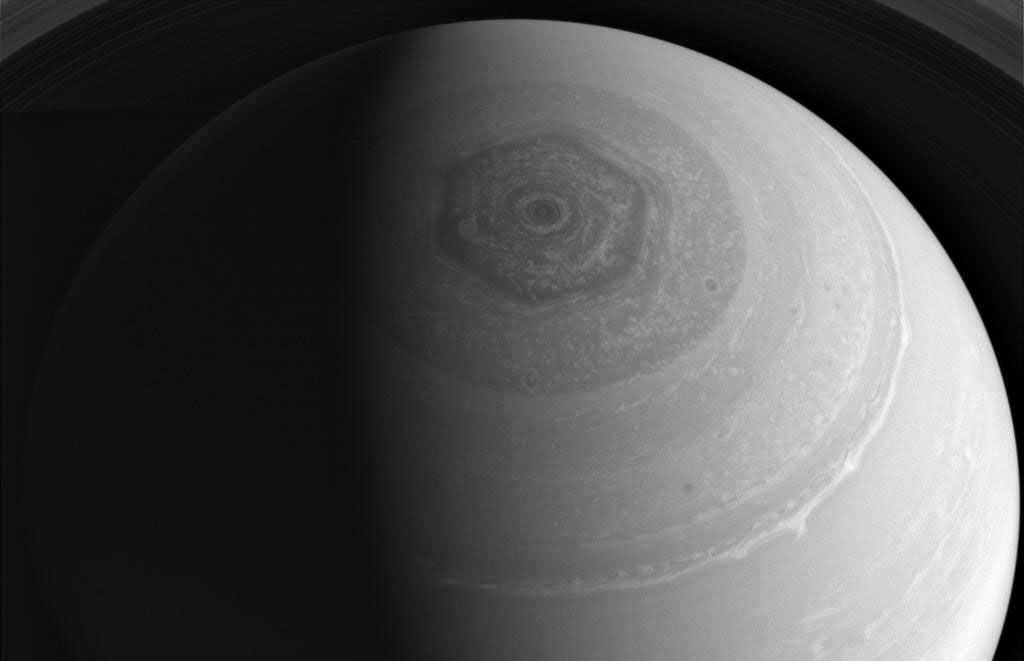

In addition, there are formations known as markings. Although they may not be as prominent as those found on Jupiter, they can still be quite sizable, reaching approximately 11,000 kilometers. Thus, they are rather awe-inspiring. Moreover, there are bright markings, which are significantly smaller, measuring only about 3,000 kilometers, as well as brown ones, with a size of 10,000 kilometers.
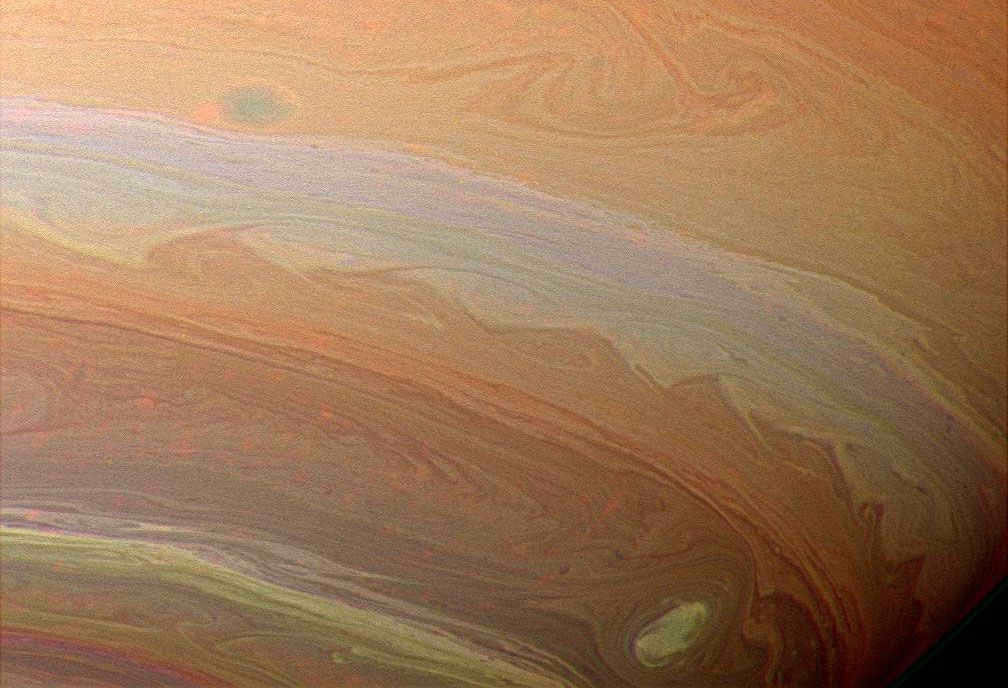
Additionally, there are stripes present on the planet’s surface, which scientists hypothesize have formed due to variations in temperature. These stripes are quite abundant, and the strongest winds blow at the center of each stripe.
Furthermore, the upper atmosphere of Saturn experiences extremely cold temperatures, ranging from -180 ° C to -150 ° C. Despite this frigid environment, the presence of a core within the planet provides heating and warmth, preventing the atmosphere from becoming even colder, considering the Sun’s distance from Saturn.
Saturn does not have a solid surface, and what we observe are only the tops of clouds. The upper layer consists of frozen ammonia, while the lower layer is composed of ammonium. As one gets closer to the planet, the hydrogen atmosphere becomes denser and hotter.
Internal composition
The internal structure is remarkably similar to that of Jupiter. It is believed that at the center of the planet lies a large core made of silicate and metal. At a depth of approximately 30,000 km, the temperature reaches 10,000 ° C, with the pressure reaching around 3 million atmospheres. The pressure and temperature are even higher within the core itself, which serves as the source of the heat that warms the entire planet. In fact, Saturn emits more heat than it receives from the sun.
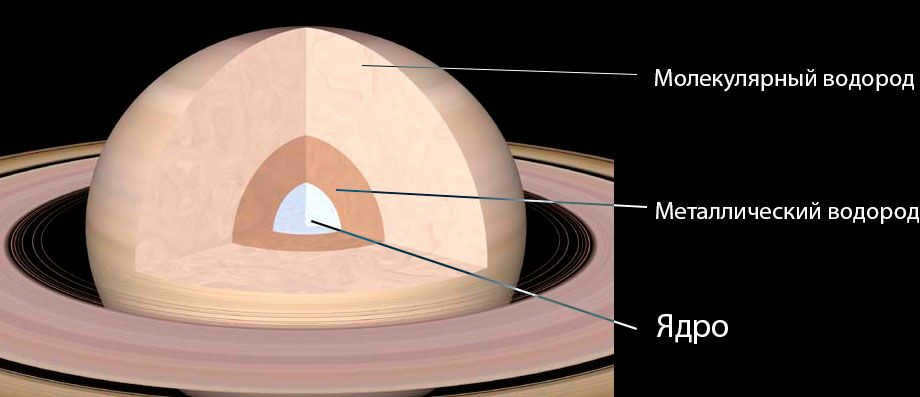
Surrounding the core of Saturn is a metallic state of hydrogen, with a layer of liquid molecular hydrogen closer to the surface that transitions into a gaseous phase near the atmosphere. The planet’s magnetic field is remarkable because it aligns with the planet’s axis of rotation. Saturn’s magnetosphere displays a symmetrical appearance, but the radiation poles exhibit regular shapes and contain empty spaces.
Rings
The discovery of the rings of Saturn can be credited to the renowned scientist Galileo Galilei, who first observed them in the year 1610. Subsequent observations made with more advanced telescopes, such as the one used by Dutch astronomer Huygens, revealed that Saturn actually has not just two, but multiple rings. These rings consist of a diverse collection of materials, including ice and rocks of various sizes, which sweep away anything that comes in their way. The size of these rings is truly astonishing, with the largest one being a staggering 200 times bigger than the planet itself. Essentially, the rings can be considered as remnants of destroyed comets, satellites, and other debris from outer space.
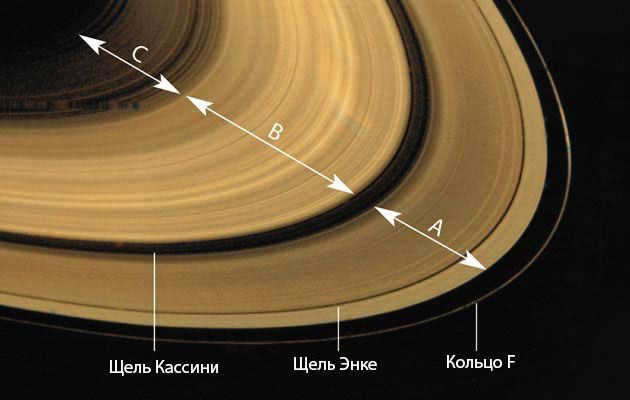
Interestingly enough, the rings of Saturn are also assigned names. They are organized in alphabetical order, meaning there are rings A, B, C, and so on.
Satellites of Saturn
Saturn has a total of 61 satellites. They vary in shape, but they are generally small in size. Most of them are composed of ice, with a few containing rock impurities. Many of the satellite names are derived from the Titans and their descendants, just like the planet’s name itself, which comes from Cronus, who ruled over them.
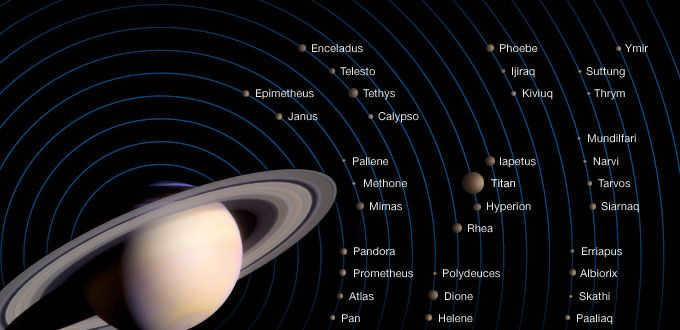
Titan, Theba, Enceladus, Mimas, Tefia, Dione, Rhea, Hyperion, and Japetus are the largest satellites of Saturn. With the exception of Theba, these satellites rotate synchronously and always face the same direction in relation to Saturn. Many scientists believe that Titan bears a resemblance to the early Earth in terms of its structure and other characteristics when the Earth was 4.6 billion years old.
Here, the conditions are more favorable, and there may be simple microorganisms present. However, at present, it is not possible to confirm this.
Exploring Saturn
If we were to embark on a journey to this incredible planet right now, we would be greeted by a breathtaking sight. Picture a colossal Saturn, surrounded by a multitude of planetary remnants, fragments of comets, and icy particles swirling at incredible velocities. This is the magnificent ring system that appears so enchanting from our vantage point on Earth. However, the reality is far less romantic. Thick clouds blanket the planet, shrouding its entire surface. Violent winds whip through certain areas, surpassing the speed of sound on Earth.
Occasionally, there are instances of lightning storms on Saturn, posing a significant risk of being struck. This danger is amplified by the fact that there are no suitable shelters to seek refuge. Overall, Saturn is an exceptionally perilous location, regardless of any protective measures in place. One could potentially be swept away by a hurricane or even directly hit by lightning. It’s crucial to remember that Saturn is a gaseous planet, which brings forth a whole host of additional hazards.
Amazing facts
- Saturn, the planet with the lowest density in the solar system, has a density lower than water. Additionally, due to its rapid rotation, it becomes flattened at the poles.
- The Giant Hexagon is a unique phenomenon found only on Saturn. It is a stable formation in the shape of a regular hexagon that surrounds the planet’s north pole. The scientific community has yet to fully explain this atmospheric phenomenon, but it is believed to be connected to a vortex within Saturn’s hydrogen atmosphere, with a massive size of 25,000 kilometers.
- To put things in perspective, if the Sun were the size of a door, Earth would be as small as a dime, while Saturn would be as large as a basketball.
- Saturn is a massive gas planet that lacks a solid surface. In other words, what we observe is not solid but rather a collection of clouds.
- The planet has an average radius of 58,232 kilometers. Despite its immense size, it rotates at a fast pace.
- A day on Saturn lasts 10.7 hours, which is the time it takes for the planet to complete one rotation on its axis. The length of a year on Saturn is equivalent to 29.5 Earth years.
- When the solar wind collides with Saturn’s atmosphere, it produces unique “sounds”. If these sounds were translated into the range of human audible sound waves, they would create a chilling melody:
The Pioneers Who Reached Saturn
Pioneer 11 became the first spacecraft to reach Saturn in 1979. While it didn’t land on the planet itself, it came close, reaching a distance of 22,000 km. This historic event provided astronomers with valuable photos and insights into the giant space body. Shortly after, the Cassini spacecraft successfully sent a probe to Saturn’s moon, Titan. The probe landed and captured more detailed images of both Saturn and Titan. In 2009, scientists made the remarkable discovery of an ocean of ice beneath the icy surface of Enceladus.
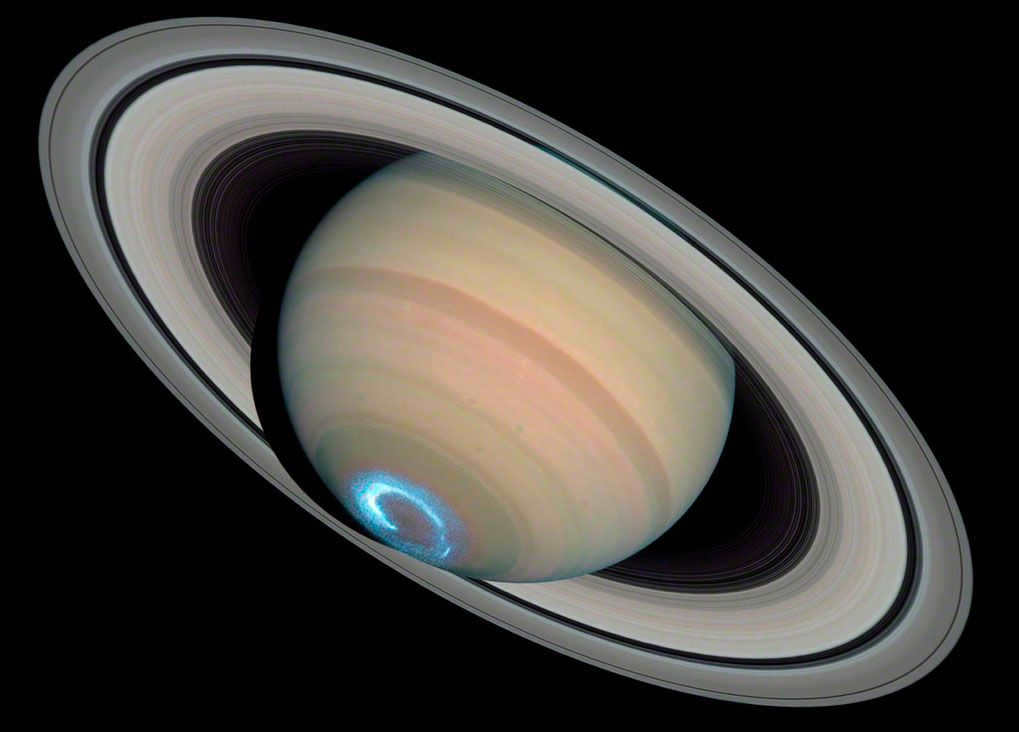
In recent times, scientists have made an intriguing discovery in Saturn’s atmosphere – a unique type of polar lights that encircles one of its poles.
There are still numerous enigmas and puzzles surrounding this planet, which astronomers and scientists will need to unravel in the coming years.
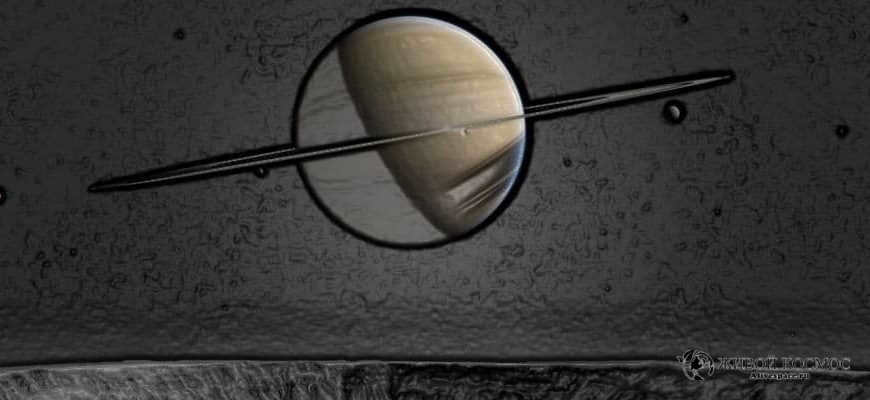
Saturn, which can be observed without the use of a telescope, is located the furthest away from the Sun compared to other planets in our solar system.
With its stunning rings, Saturn stands out as the most easily identifiable planet in our solar system. It is also a popular subject of research for scientists and astronomers.
Today, we will be discussing some of the distinctive features of Saturn. Let’s review some facts that undoubtedly distinguish this planet from the rest of the celestial bodies.
1 Saturn is less dense than water
Imagine being a massive interplanetary creature with a gigantic swimming pool the size of the entire solar system. Perhaps you don’t have any rubber ducks, but you’re in need of something to play with. So, you decide to visit your space barn known as the Milky Way and borrow Saturn from some forgotten planetary system, with the intention of returning it later, of course. With a splash, you drop Saturn into your swimming pool, only to be amazed! The planet effortlessly floats, resembling a beach ball!
The reason for Saturn’s buoyancy is due to its composition, which is mostly gas. As a result, it has a relatively low density. In fact, Saturn’s density measures at 0.92 g/cm3, which is less than the density of water. This means that, in theory, if immersed in water, Saturn would indeed float.
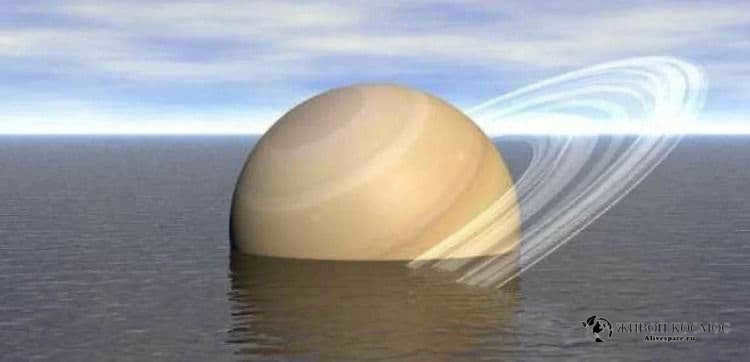
2 Saturn’s rings are the largest in the entire solar system
The rings surrounding Saturn are its most distinctive feature. However, it is not the only planet in the solar system with rings. All of the gas giants possess them. Nonetheless, Saturn boasts the most extensive and easily visible rings. These rings are of such magnitude that they can be observed even with a regular home telescope, and even through binoculars!
The composition of Saturn’s rings consists of billions of minuscule particles comprised of rock and ice. Astronomers hypothesize that these particles were once comets or asteroids that were captured by Saturn and subsequently fragmented due to the immense gravitational forces exerted by the planet.
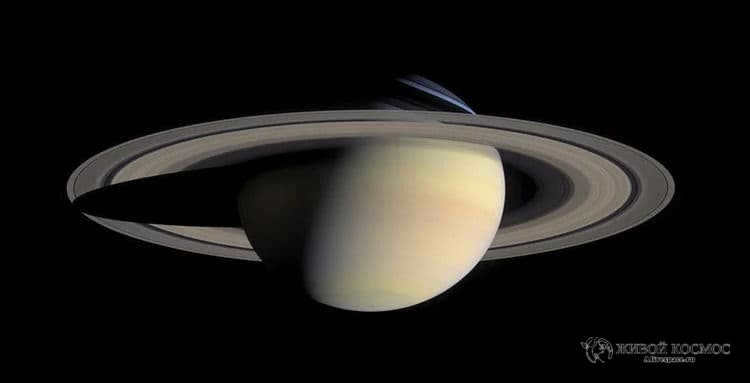
3 Saturn does not possess a solid surface
Saturn, similar to Jupiter, Neptune, and Uranus, falls under the category of “gas giants”. Unlike Earth or Mars, these planets lack a firm surface as they are primarily composed of gas.
If a spacecraft were to inadvertently collide with Saturn, it would simply submerge into the planet’s core. However, prior to reaching the core, it would most likely be obliterated by intense winds, extreme temperatures, and immense pressure. Nevertheless, assuming it could withstand such conditions, the spacecraft would ultimately descend until it reached the core of the planet.
Astronomers possess uncertainty regarding the presence of a solid or even semi-liquid core within Saturn.
4 Saturn boasts a hurricane in the shape of a hexagon.
One of the most distinctive features of Saturn is the enormous hexagon-shaped vortex located at its North Pole. While visible through telescopes with an aperture larger than 150 mm, it was officially confirmed in 1981 through images captured by the AMS Cassini.
The hexagon on Saturn is a massive storm that has been raging for centuries. Astoundingly, each side of the hexagon is larger than Earth’s diameter!
There are various theories surrounding the origin of this storm’s unique geometric shape. It is believed to be caused by the swirling ring of winds that encircle the storm. These winds rotate in the opposite direction of the storm’s own rotation. Scientists have managed to replicate this phenomenon on a smaller scale here on Earth, resulting in different shapes such as triangles and octagons.
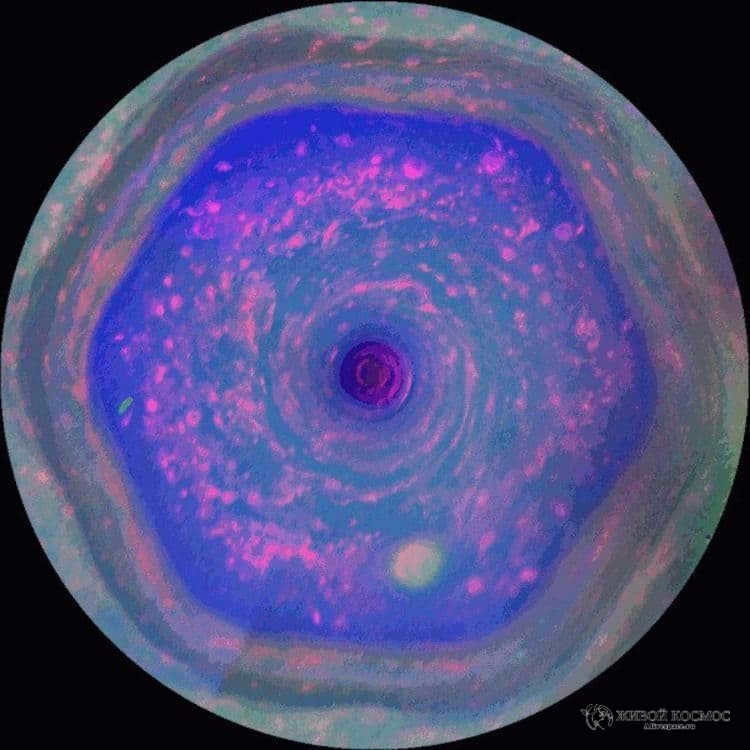

5 Diamonds fall from the sky on Saturn
In ancient times, there was a belief that all the diamonds on Earth originated from the heavens. However, we now understand that this is not the case. Diamonds are actually formed when carbon atoms are subjected to extreme temperatures and pressures within the Earth’s interior.
Interestingly, on Saturn, diamonds are actually created in the planet’s clouds and subsequently rain down across the entire planet. This phenomenon occurs due to the presence of atmospheric layers on Saturn where the temperature and pressure are so intense that methane molecules transform into diamonds.
As Saturn lacks a solid surface, these diamonds continue to sink into the planet until they reach even hotter regions, where they ultimately vaporize.
6 A day on Saturn is shorter than a day on Earth
Saturn is an enormous planet. Despite its size, it may appear that it takes a long time for Saturn to complete one rotation around its axis. However, this is not the case, as Saturn actually rotates very quickly. In fact, the only planet in the solar system that spins faster than Saturn is Jupiter.
At the equator, Saturn rotates at a speed of 9.87 kilometers per second. This means that a day on Saturn lasts approximately 10 hours and 30 minutes. In comparison, the Earth rotates at a speed of 0.46 km/s near the equator, making a day on Earth around 24 hours long.
The incredible rotation speed of Saturn is a result of its colossal gravitational force. As gas clouds are drawn towards the planet’s core, it speeds up to conserve its angular momentum. This phenomenon is akin to how skaters increase their spinning velocity by pulling their arms closer to their bodies.
Saturn is not big enough to become a star. However, there is one notable quality that could be advantageous for Saturn in a job interview for a stellar position. It lies in its chemical makeup.
Saturn is primarily composed of two elements: hydrogen and helium. This composition is similar to that of stars, with the only discrepancy being the proportions. Saturn consists of approximately 75% hydrogen, whereas many main sequence stars contain over 90% of this element.
8 Saturn is the most distant planet visible to the naked eye
The average distance between Earth and Saturn is 1.4 billion kilometers. That’s over 9 times greater than the distance from Earth to the Sun.
However, Saturn is so enormous that it can be observed from our planet without the need for a telescope. Saturn was believed to be the outermost planet in the solar system until the telescope was invented and Neptune and Uranus were discovered.
The earliest written records of Saturn were collected by the Assyrian civilization, which resided in what is now Iraq. These records date back to 700 BC.

9 Saturn has the highest number of satellites among all the planets
In recent years, Saturn and Jupiter have been engaged in a constant rivalry to determine which planet has the most satellites. As our telescopes and imaging technologies become more advanced, we continue to uncover more and more of these celestial companions.
At present, Saturn holds the record with a total of 146 satellites. Many of these are relatively small bodies, measuring only a few tens of meters in diameter. However, there are also some notable and sizable satellites orbiting Saturn. Enceladus and Titan, for instance, are considered to be prime candidates for the existence of liquid water and possibly even extraterrestrial life.
Given the ongoing advancements in our observational capabilities, it is highly likely that we will discover even more satellites around Saturn in the future.
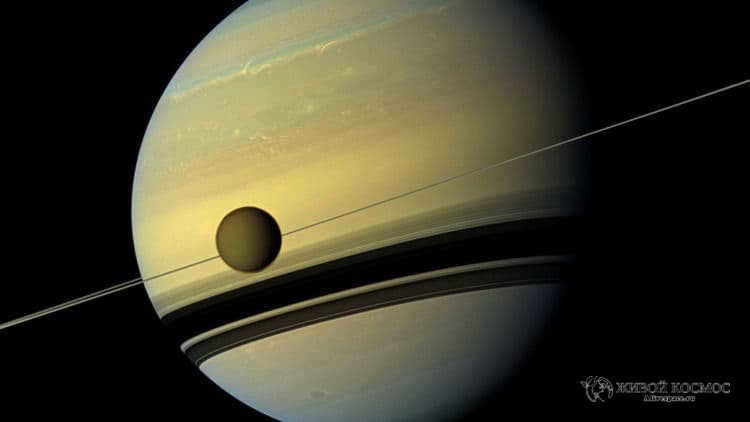
10 Saturn’s rings are diminishing
Regrettably, Saturn’s most prominent feature, and indeed, a symbol of the solar system, will disappear in the future.
Gravity of Saturn constantly attracts the small fragments of rock and ice that compose the rings, gradually thinning them.
Astronomers predict that Saturn’s rings will be absorbed by the planet within the next 300 million years. In astronomical terms, this is not too far away.
Therefore, we are incredibly fortunate to have witnessed these magnificent rings.
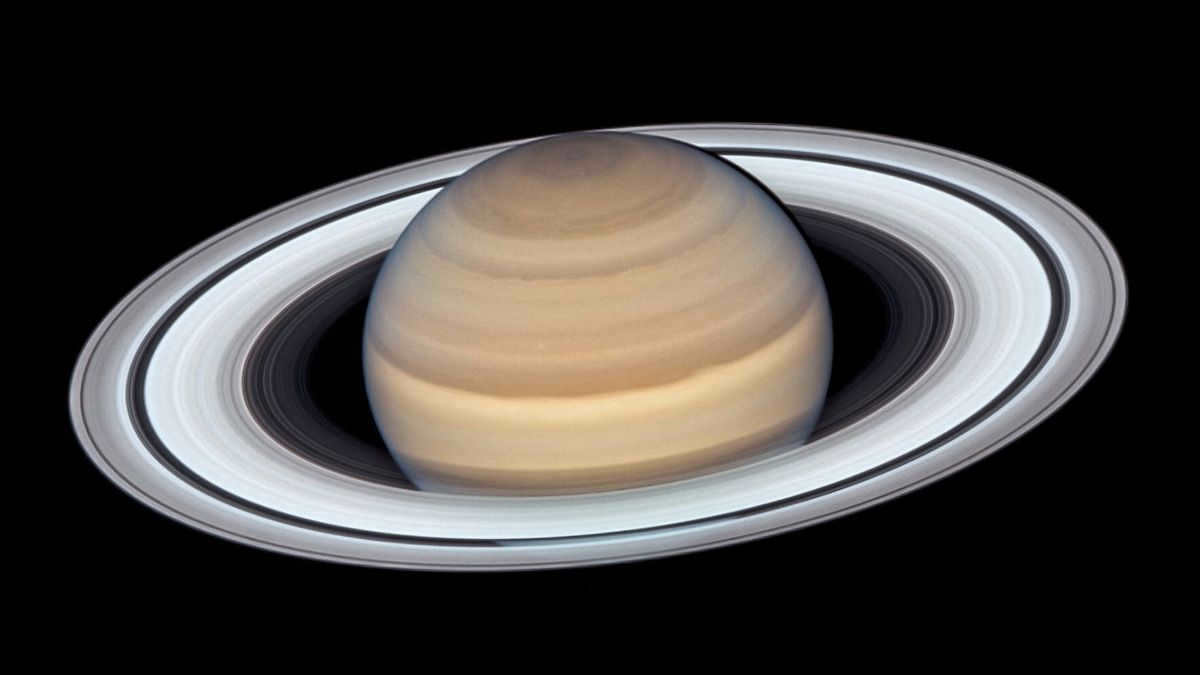
Saturn is positioned as the sixth celestial body in our Solar System, following the Sun, Moon, Mars, Venus, and Jupiter. It is renowned for being the second most substantial planet in terms of size. While it may be the farthest planet from Earth that can be seen with the naked eye, the most striking characteristic of this planet, its rings, can only be fully appreciated through the use of a telescope. While it is true that other gas giants such as Jupiter, Uranus, and Neptune also possess rings, Saturn’s rings are particularly noteworthy, leading to its popular moniker, “the ringed planet.”
Saturn is a gas giant primarily composed of hydrogen and helium. It has a volume that is 760 times larger and a mass that is 95 times greater than that of Earth. Among all the planets, Saturn is the least dense and is the only one less dense than water. If there were a bathtub large enough to hold Saturn, the planet would float on the surface.
The yellow and gold streaks seen in Saturn’s atmosphere are caused by the presence of extremely fast winds in the upper atmosphere, reaching speeds of up to 1800 km/h near the equator. Saturn completes one rotation on its axis in approximately 10.5 hours. Due to its rapid rotation, Saturn has a slightly oblong shape, with the equator being more elongated. The diameter along the equator is 120,000 kilometers, while the diameter from pole to pole is 109,000 kilometers.
The Discovery of Saturn’s Rings
In 1610, Saturn’s rings were first observed by Galileo Galilei. However, it wasn’t until 1655 that Dutch astronomer Christiaan Huygens, using a more advanced telescope, proposed that Saturn’s rings were actually thin and flat.
The Composition and Origin of Saturn’s Rings
Over time, as scientists developed better instruments, they were able to gain a deeper understanding of the structure and composition of Saturn’s rings. These rings are composed of countless particles of ice and rock, ranging in size from tiny grains of sugar to massive structures comparable to entire houses. It is believed that these particles are remnants from comets, asteroids, or even destroyed satellites. Additionally, recent research from 2016 suggests that the rings may have originated from dwarf planets in the past.
The rings span over 7,000 times the diameter of a planet. Typically, the main rings measure a mere 9 meters in thickness, but the Cassini-Huygens space probe made a fascinating discovery of vertical structures within some of the rings. These formations showcased particles gathering in protrusions and crests that reached heights of over 3 kilometers.
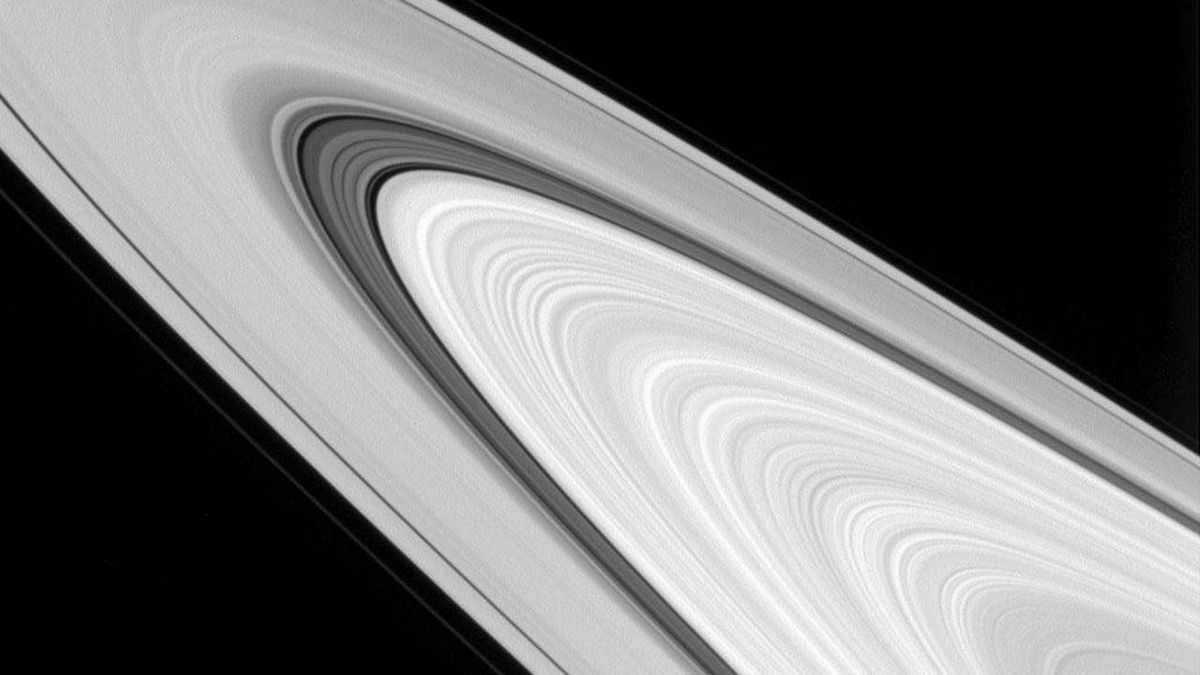
The rings of Saturn were named in the order of their discovery, and they are known as rings C, B, and A. The innermost ring is the D ring, which is very faint, while the outermost ring, discovered in 2009, is so massive that it could accommodate a billion Earths. There is a gap of approximately 4,700 kilometers that separates the B and A rings.
In Saturn’s rings, there have been sightings of enigmatic spokes that appear and vanish within a few hours. Scientists have proposed that these spokes might consist of electrically charged layers of particles, similar in size to specks of dust, formed by small meteors colliding with the rings.
During its final mission, the Cassini spacecraft approached the rings of Saturn in a way that no other spacecraft had done before. The data collected by the probe is still being examined, but it has already revealed valuable information about the colors of certain satellites orbiting Saturn. Additionally, while passing through the gaps between the rings, the probe made remarkable discoveries of intricate chemical compositions and conducted fresh measurements of the planet’s magnetic field.
Saturn’s Satellites
Saturn possesses a minimum of 62 satellites. Titan, the largest one, surpasses the size of Mercury and stands as the second largest satellite in the entire solar system. Only Jupiter’s Ganymede, and the moon that we call our own, exceed its size.
Several of these moons exhibit fascinating characteristics. Pan and Atlas boast a disc-like shape resembling that of a flying saucer. Japhet showcases a stark contrast between its bright, snow-like side and its dark, coal-like side. Enceladus presents evidence of “ice volcanism,” wherein a concealed ocean propels water and various chemicals through 101 geysers located at its southern pole. Prometheus and Pandora, among others, are referred to as shepherd satellites due to their interaction with the ring material, which helps maintain the rings’ orbital stability.
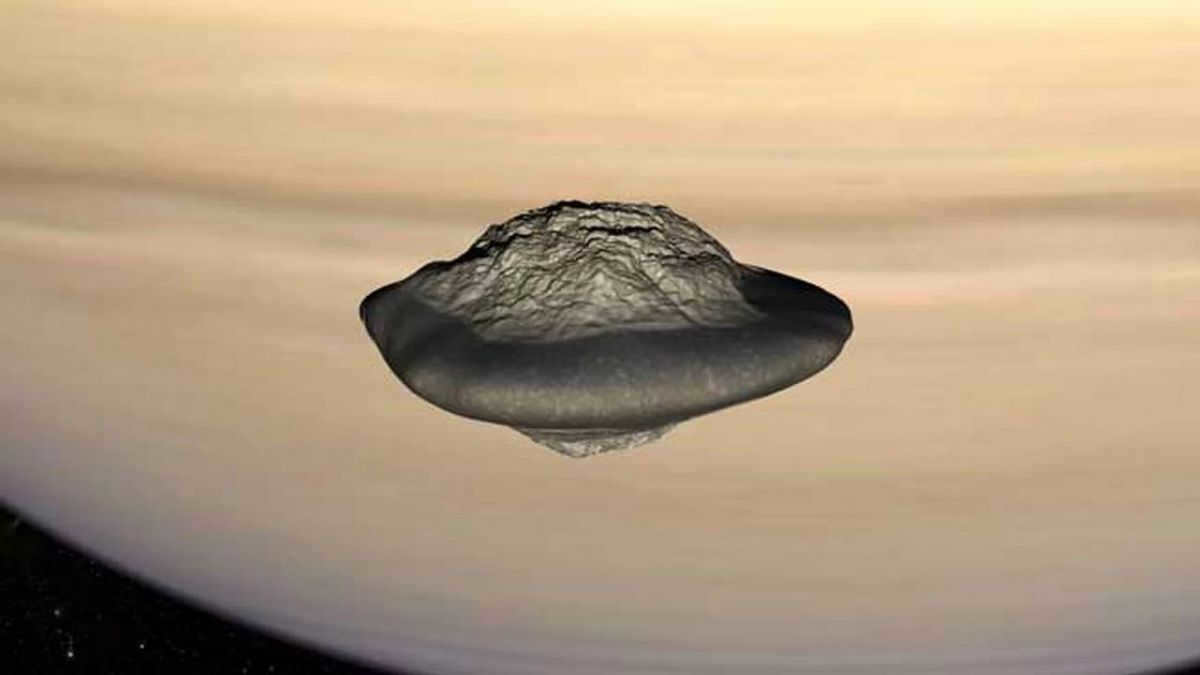
Although numerous satellites have been discovered by scientists, Saturn possesses additional small satellites that are continuously being formed and destroyed.
The Influence of Saturn on the Solar System
Being the second most massive planet in our solar system after Jupiter, Saturn’s gravitational force has had a significant impact on the destiny of our solar system. It might have played a role in propelling Neptune and Uranus away. Together with Jupiter, it might have also propelled a barrage of cosmic debris towards the inner planets during the early stages of the system’s development.
Researchers are currently investigating the formation process of gas giants and conducting simulations of the early development of our solar system in order to gain insights into the impact of Jupiter, Saturn, and other planets on our celestial system. According to a study conducted in 2017, it is proposed that Saturn is exerting a stronger influence in diverting hazardous asteroids away from Earth compared to Jupiter.
Exploration and Discovery
Pioneer 11 became the first spacecraft to reach Saturn in 1979, achieving a close flyby of the ringed planet at a distance of 22,000 kilometers. The images captured by this space probe provided astronomers with valuable information about Saturn’s outer rings and its powerful magnetic field. Further exploration with the Voyager space probe revealed that the planet’s rings are composed of thinner structures. Additionally, data obtained from the Voyager mission led to the identification of three more satellites orbiting Saturn.
The Cassini space probe, an orbiter designed specifically for Saturn, holds the distinction of being the largest interplanetary spacecraft ever constructed. Weighing in at a massive 6 tons (5.4 metric tons) and spanning two stories, this probe played a crucial role in the exploration of Saturn’s moons. It helped scientists identify geysers on the icy moon Enceladus and carried the Huygens probe, which successfully descended through Titan’s atmosphere and landed on its surface.
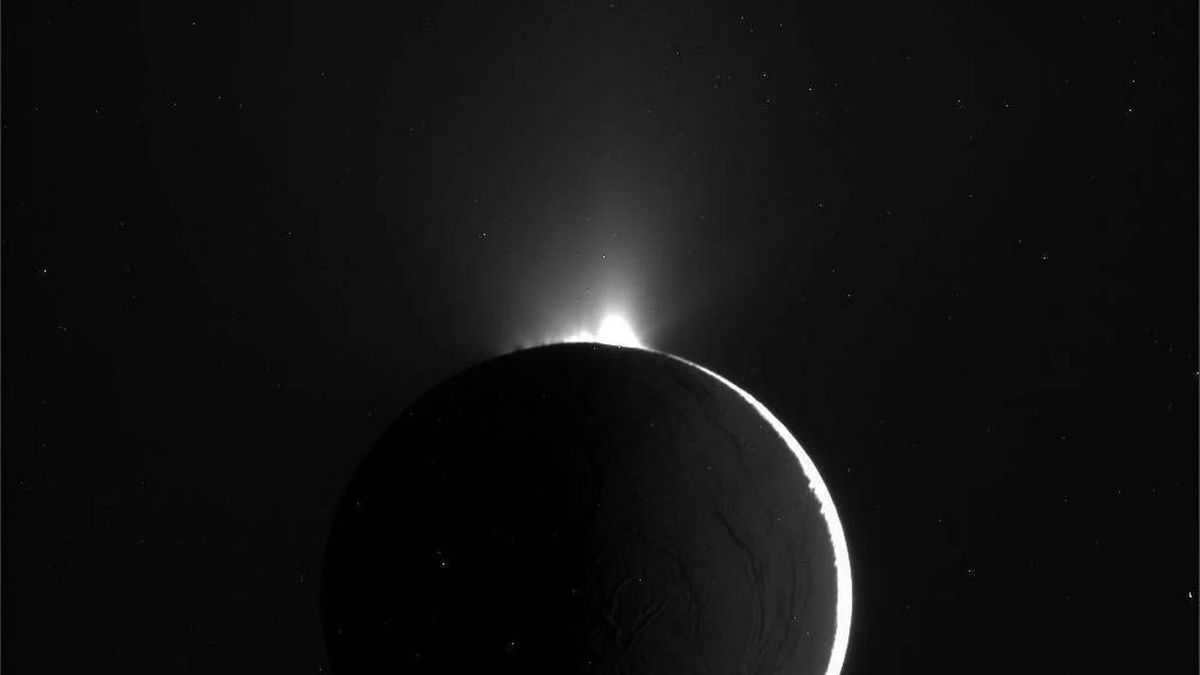
After a decade of observations, Cassini has provided scientists with an abundance of valuable data regarding Saturn and its moons. Additionally, the mission produced a remarkable photograph that recreated the iconic Pale Blue Dot image, capturing the Earth from the vantage point of Saturn’s orbit. The mission concluded in September 2017, as Cassini intentionally burned up in Saturn’s atmosphere to prevent any potential contamination of the planet’s moons by Earth bacteria.
While there are currently no planned missions to Saturn, scientists have proposed future explorations of the icy moons Enceladus and Titan. These missions may involve the use of submarines or modified rovers to further investigate these intriguing celestial bodies.

